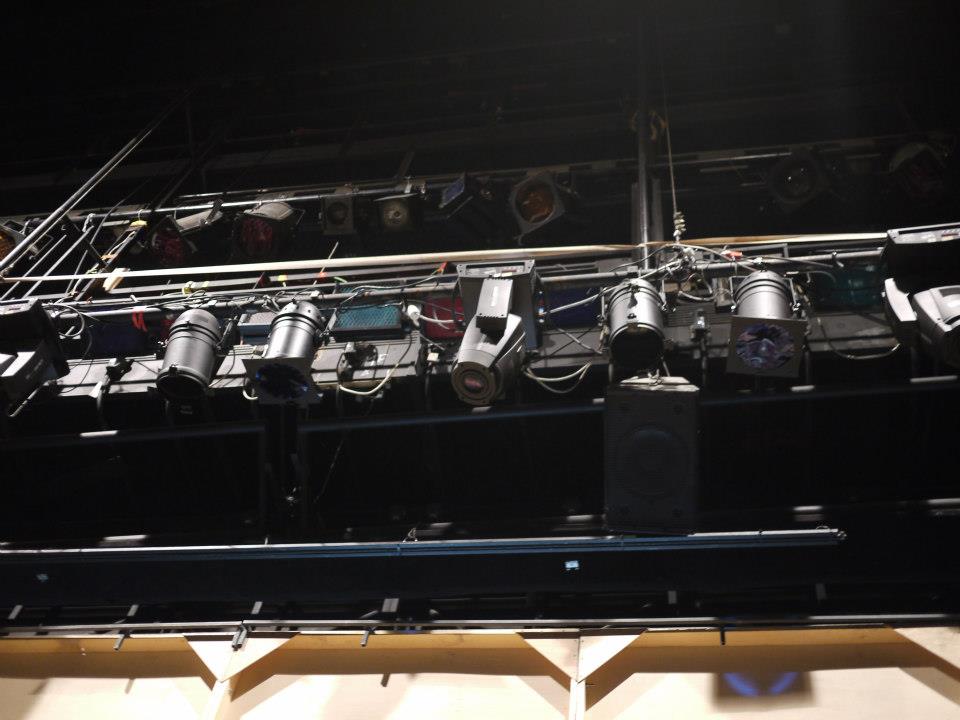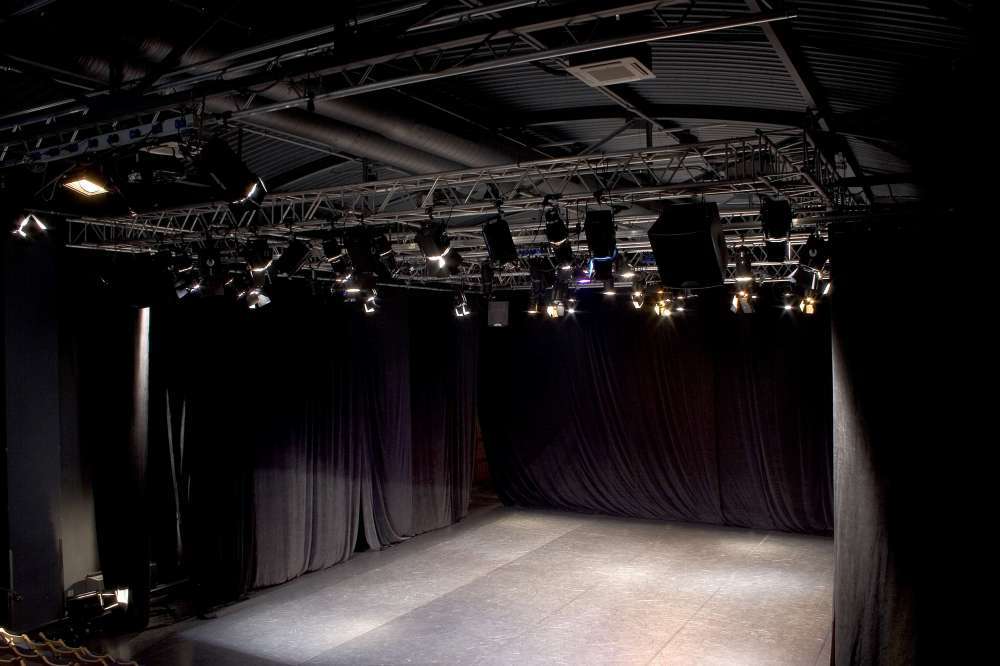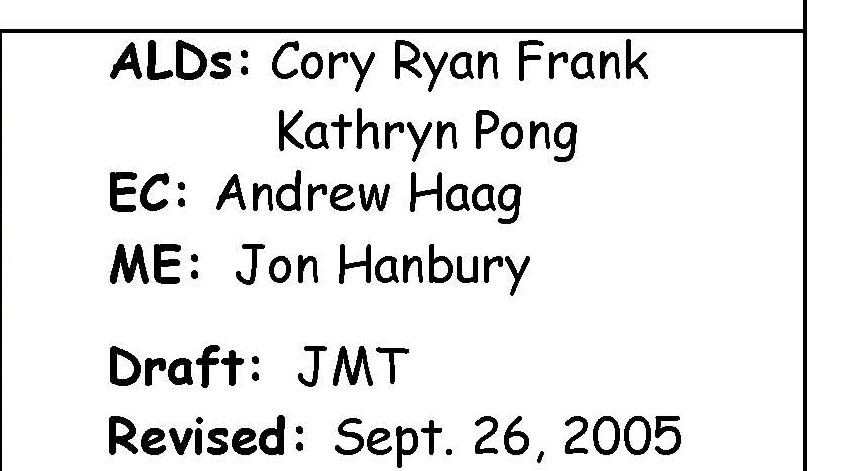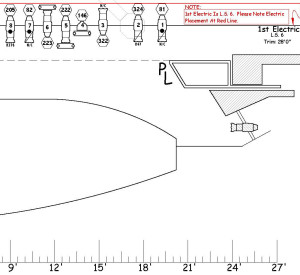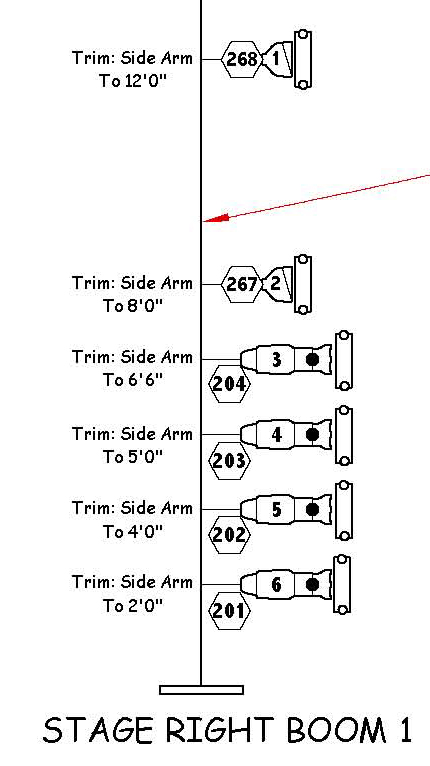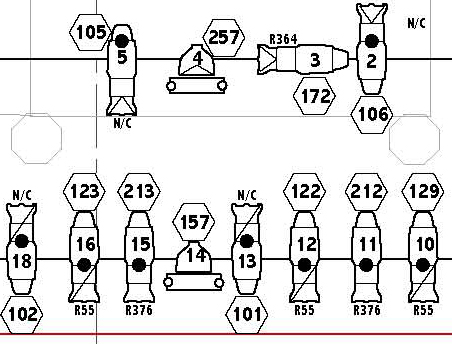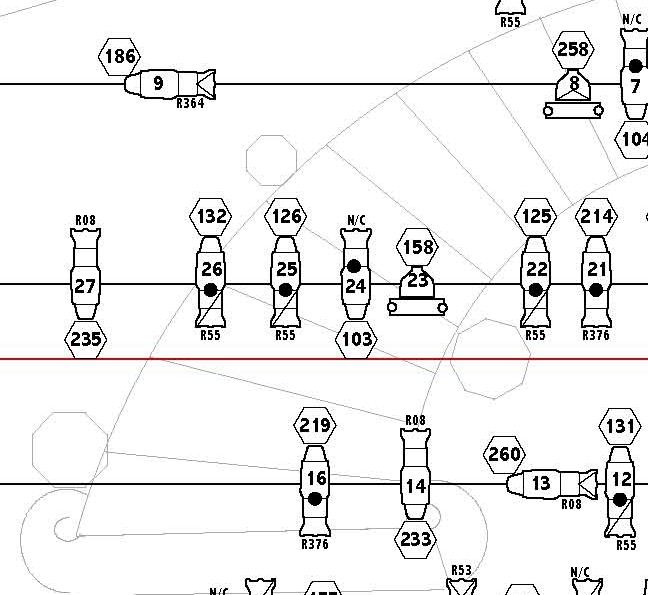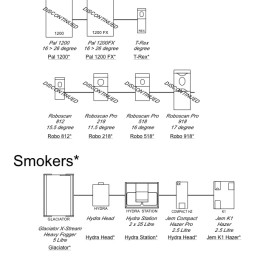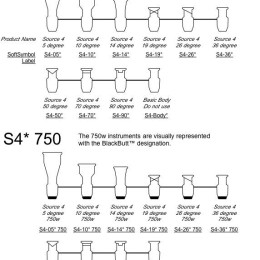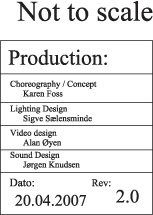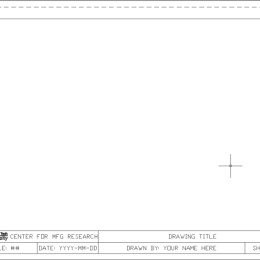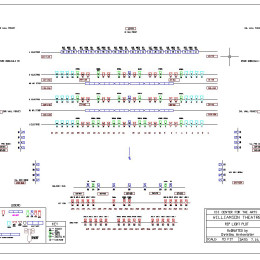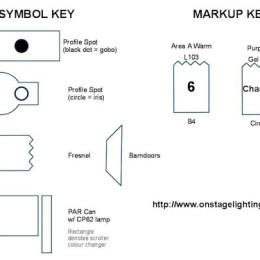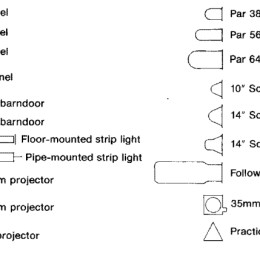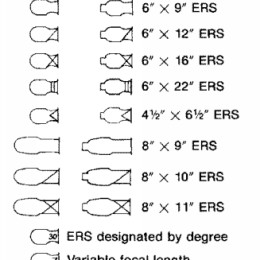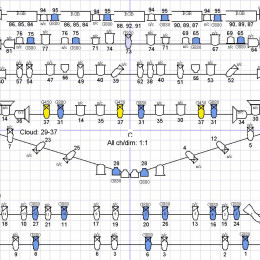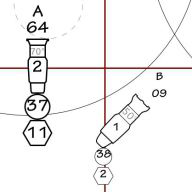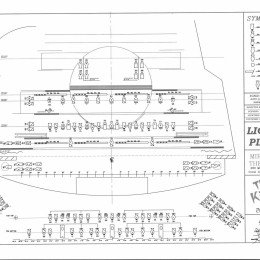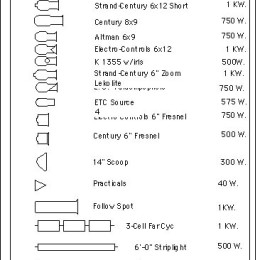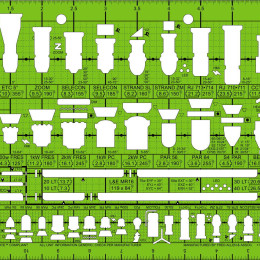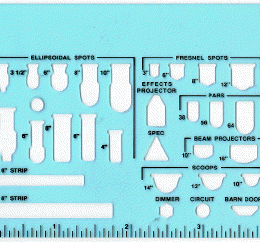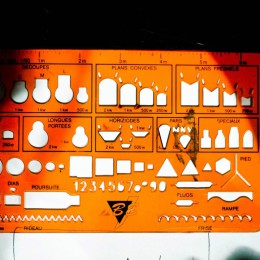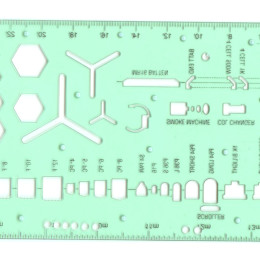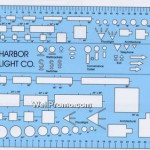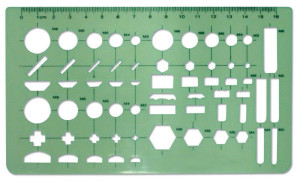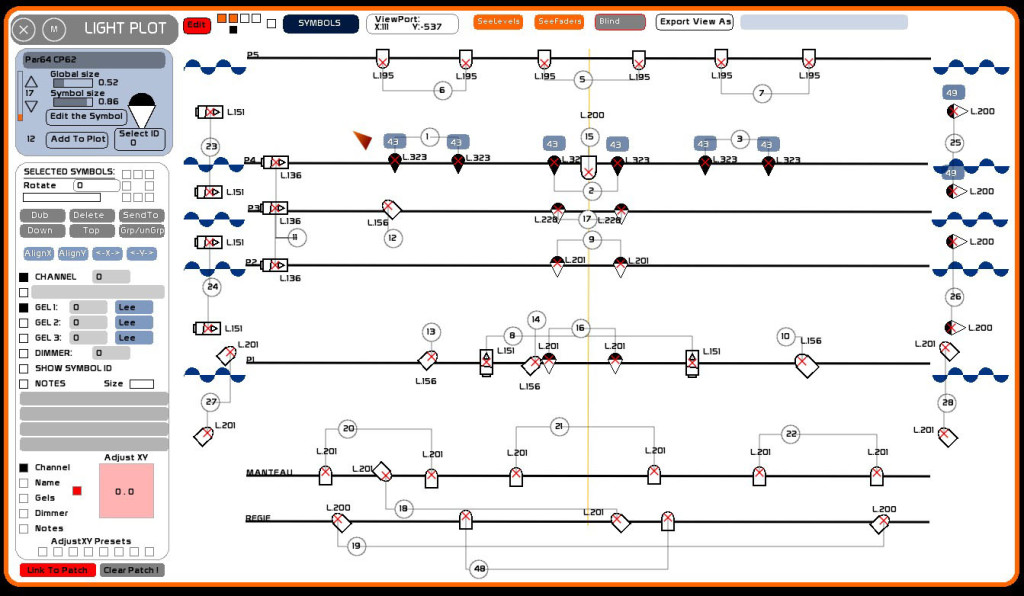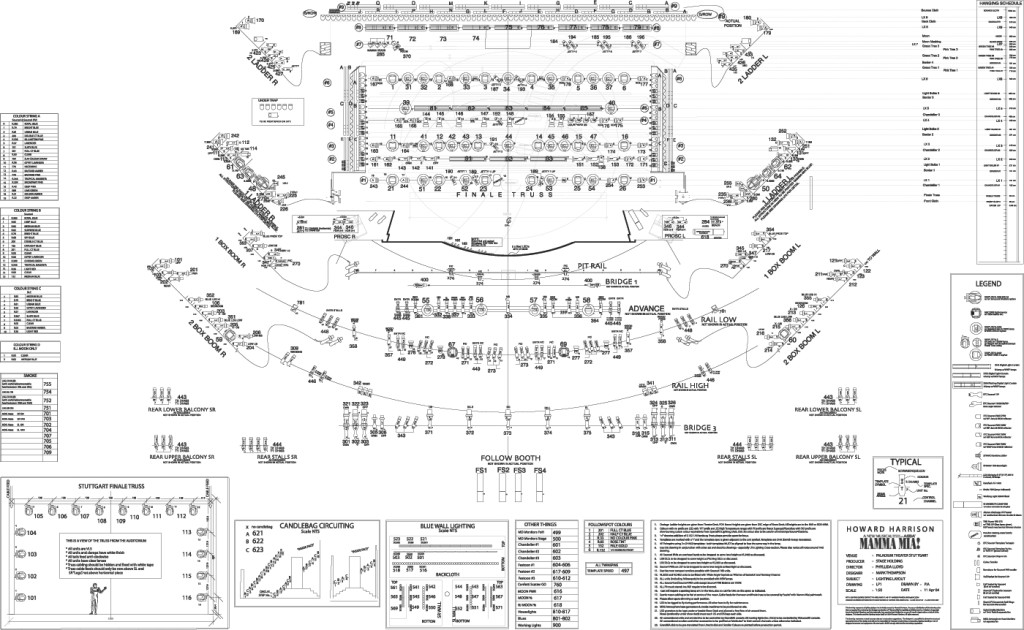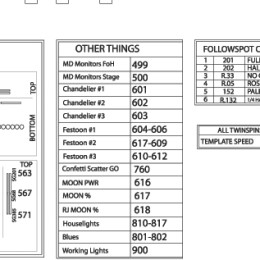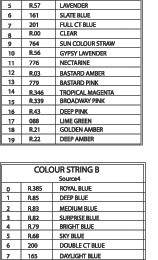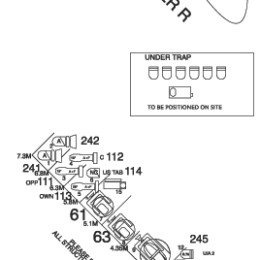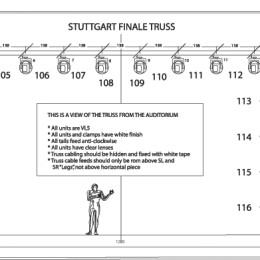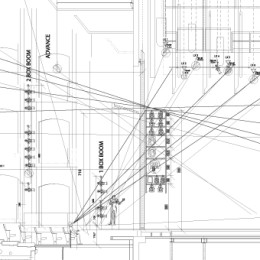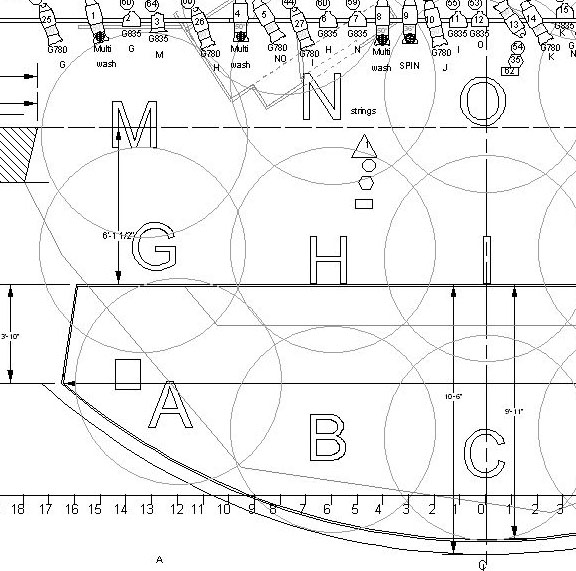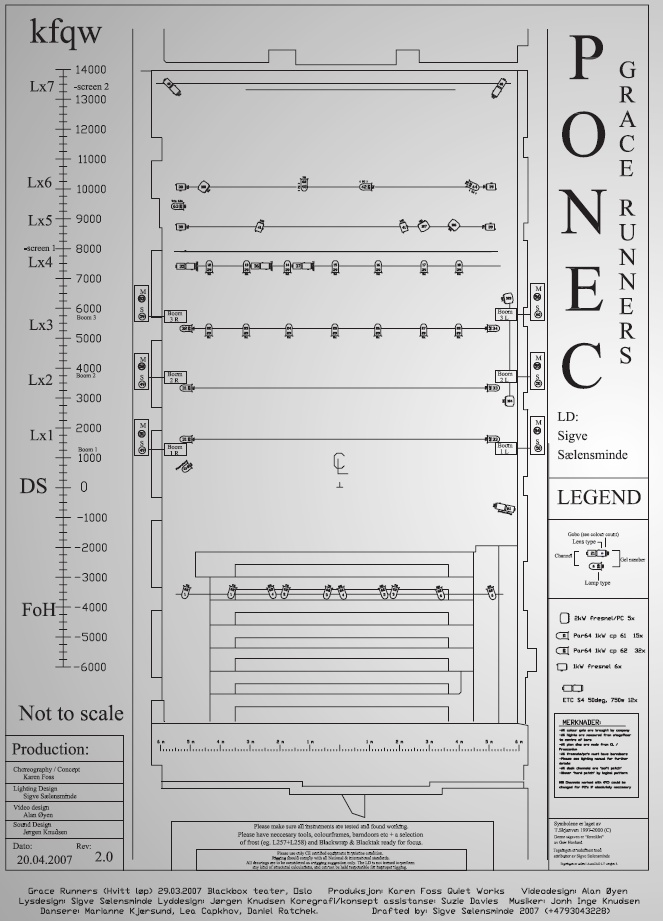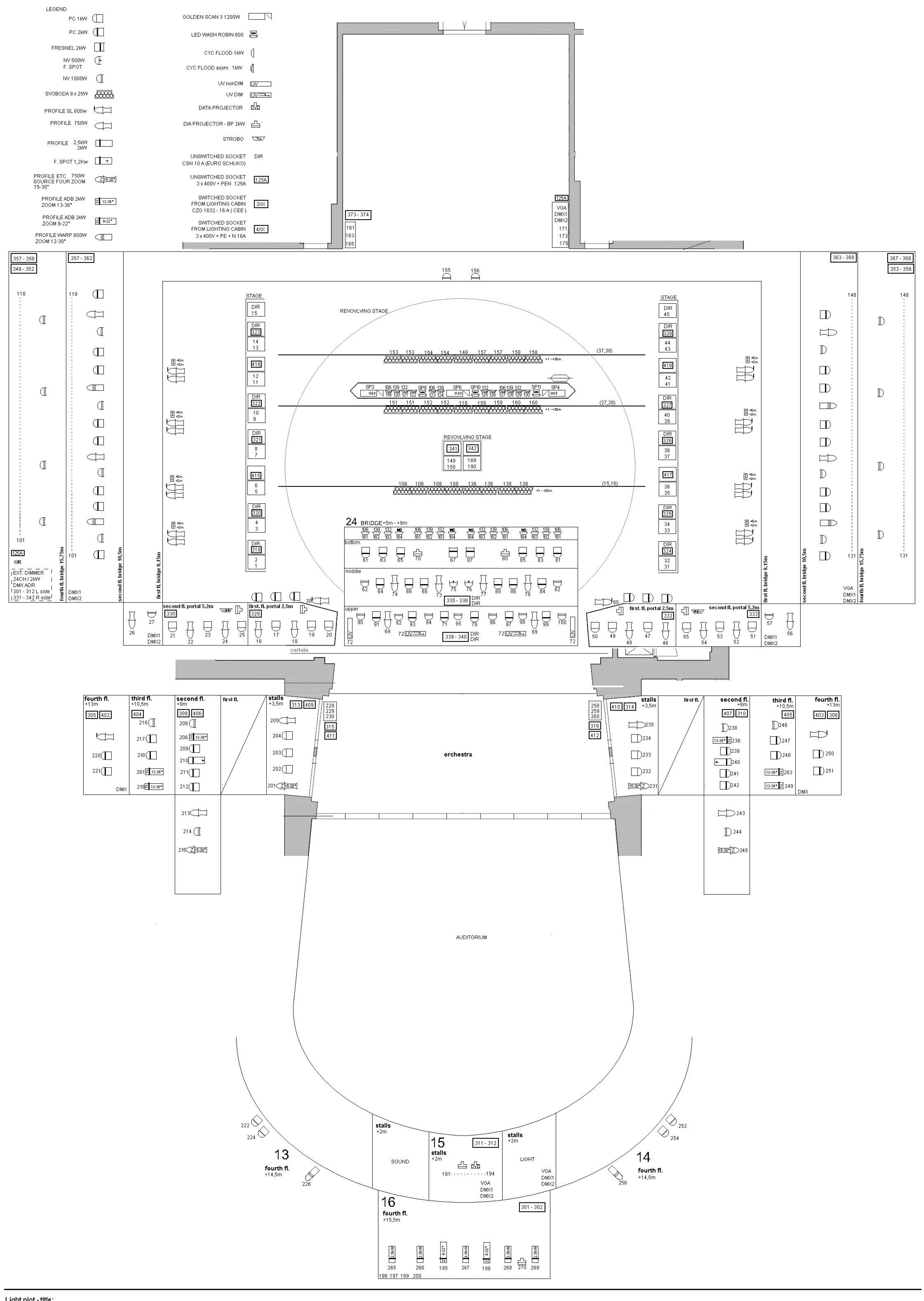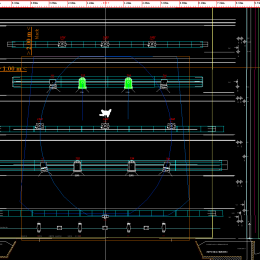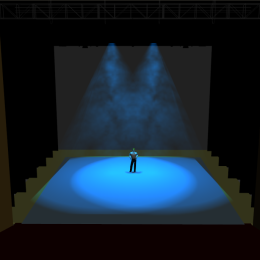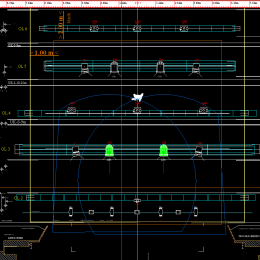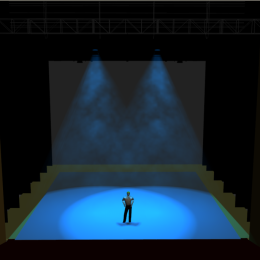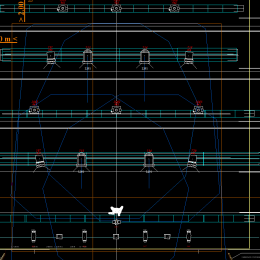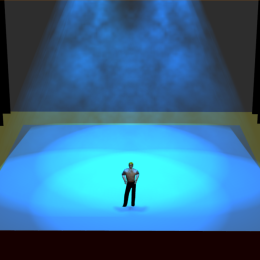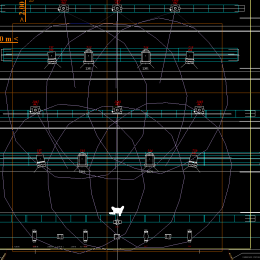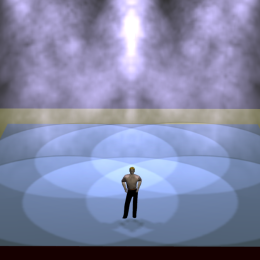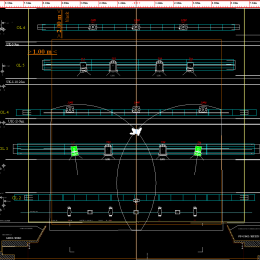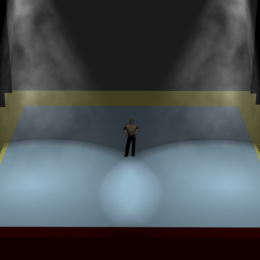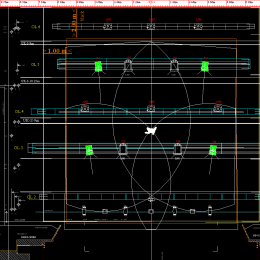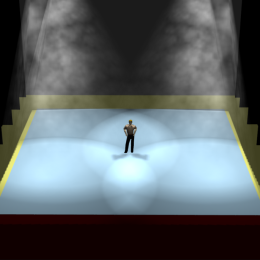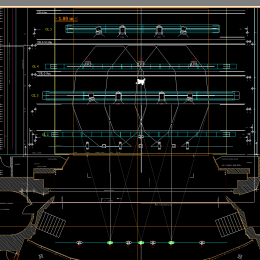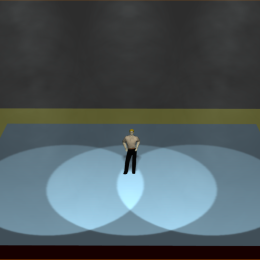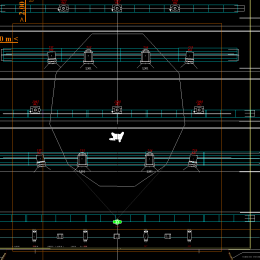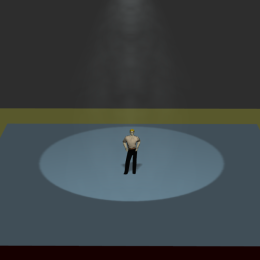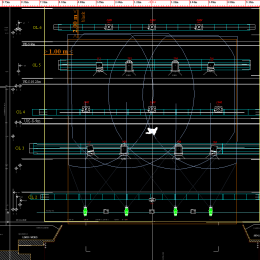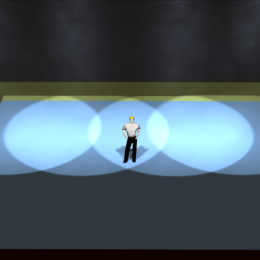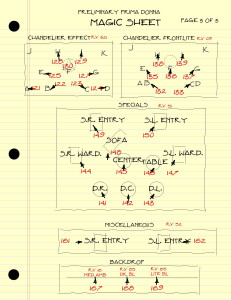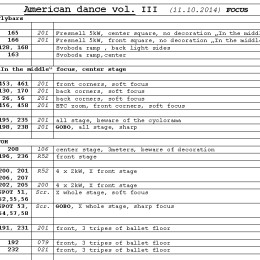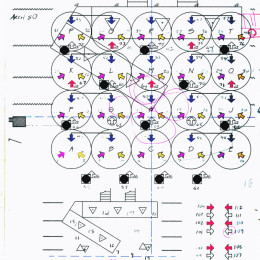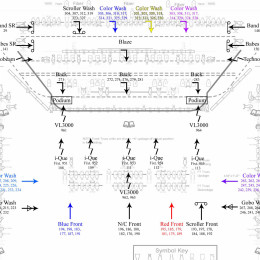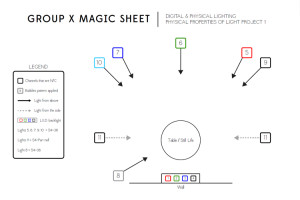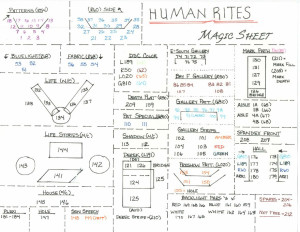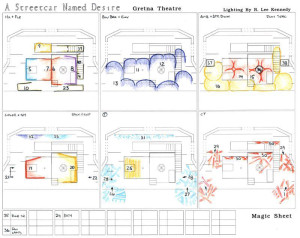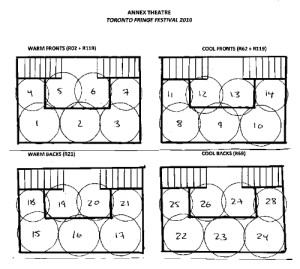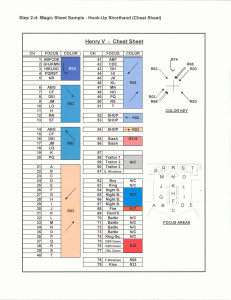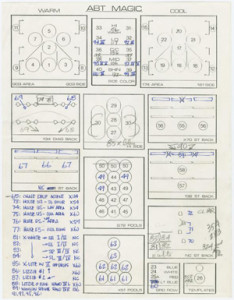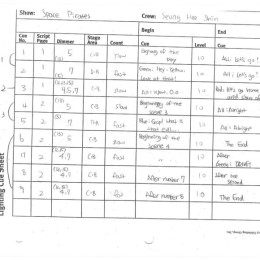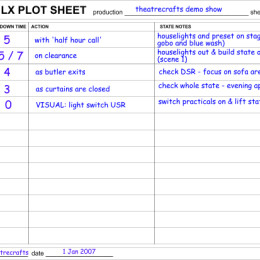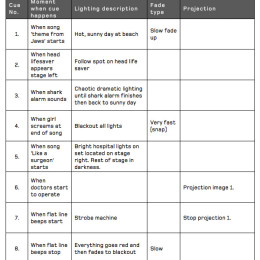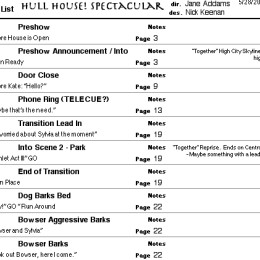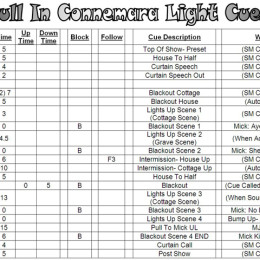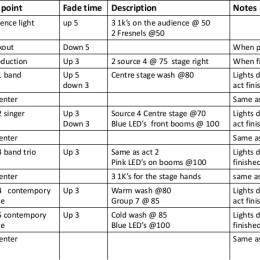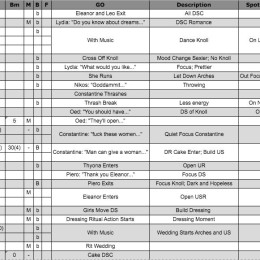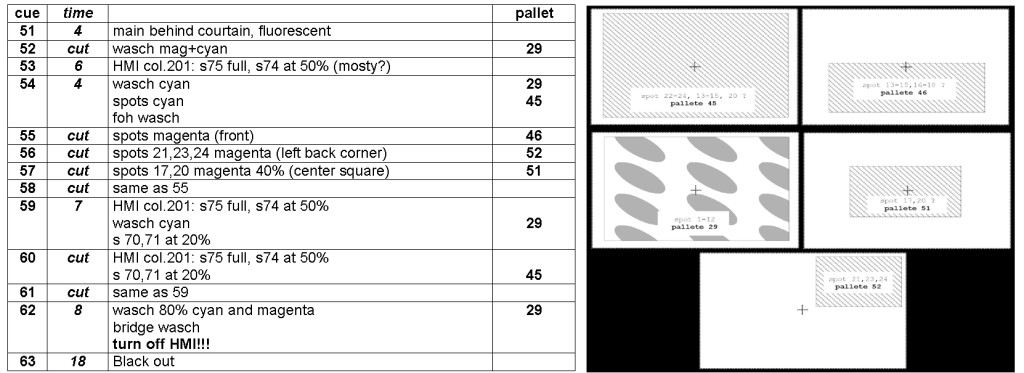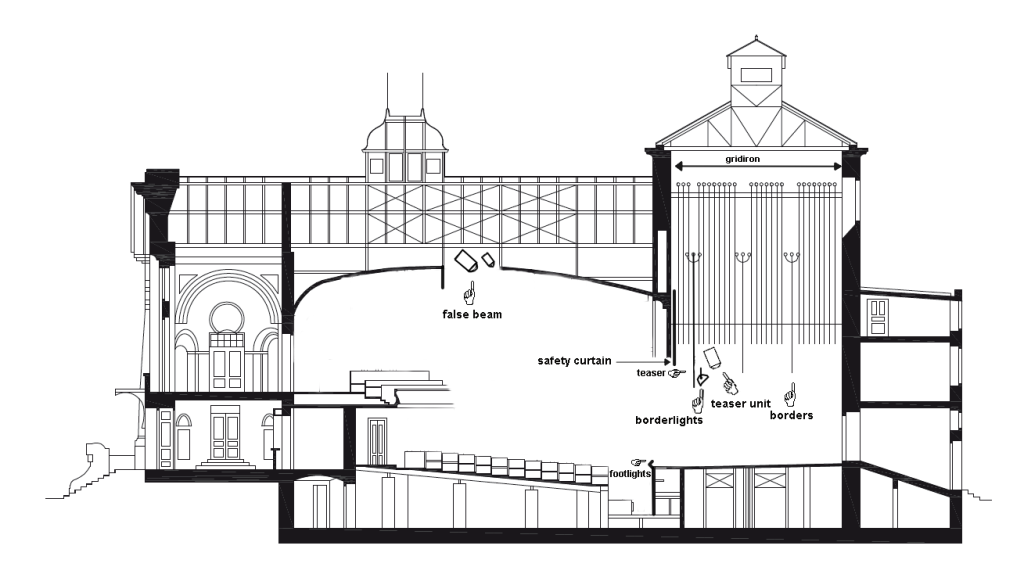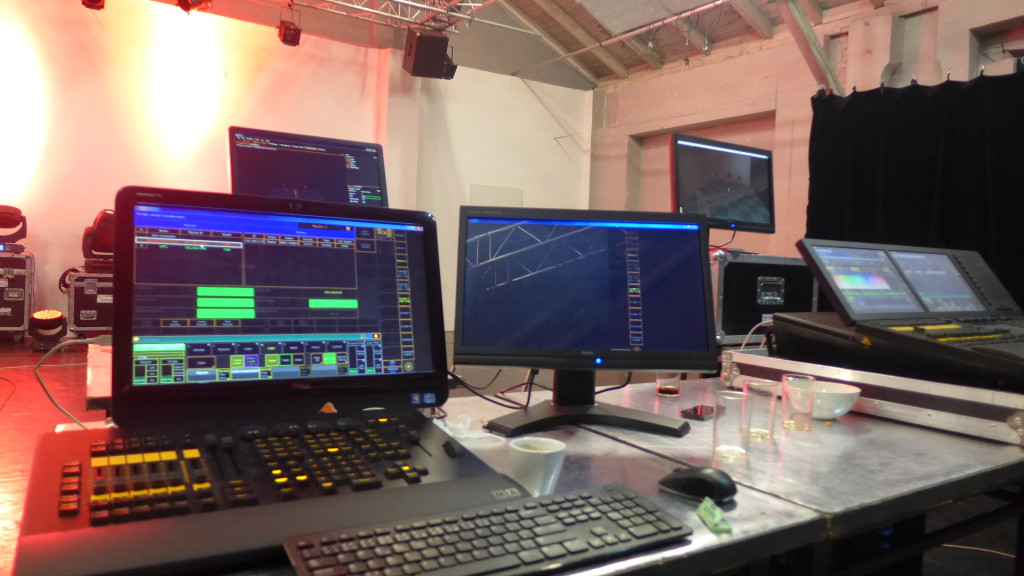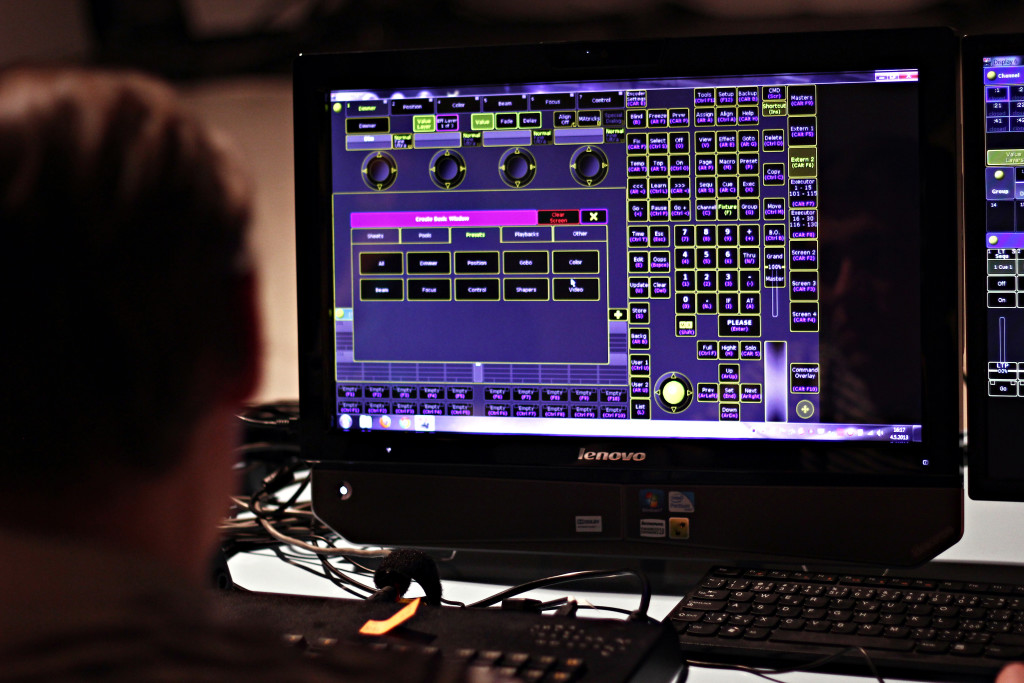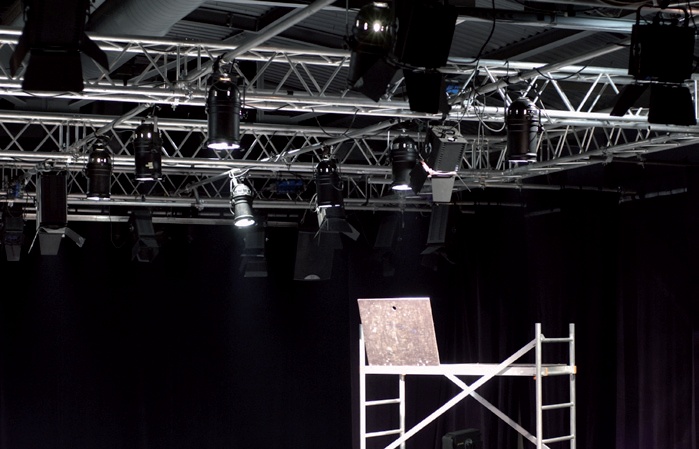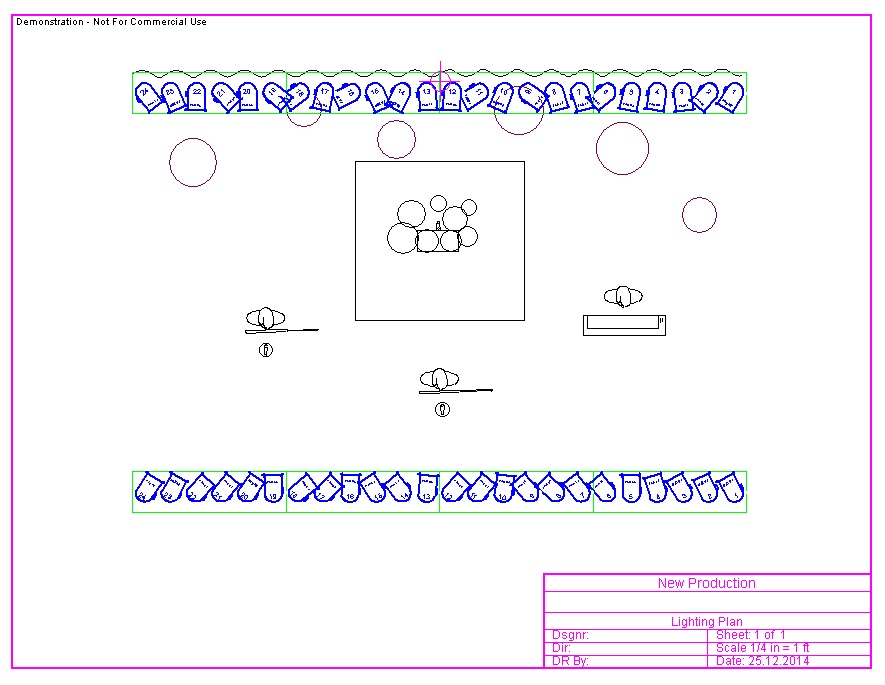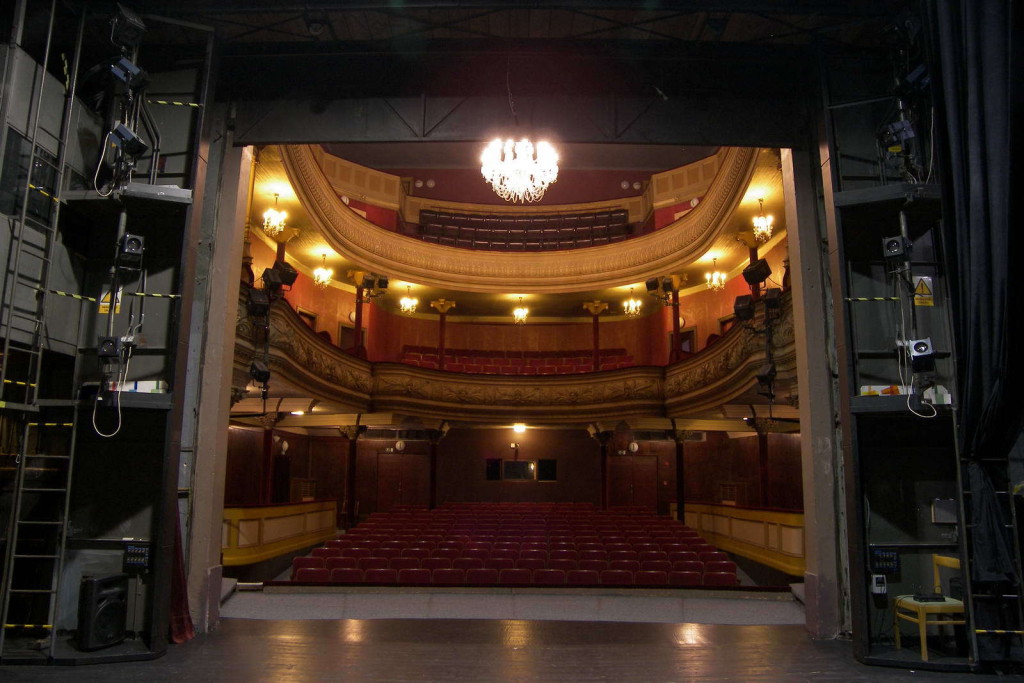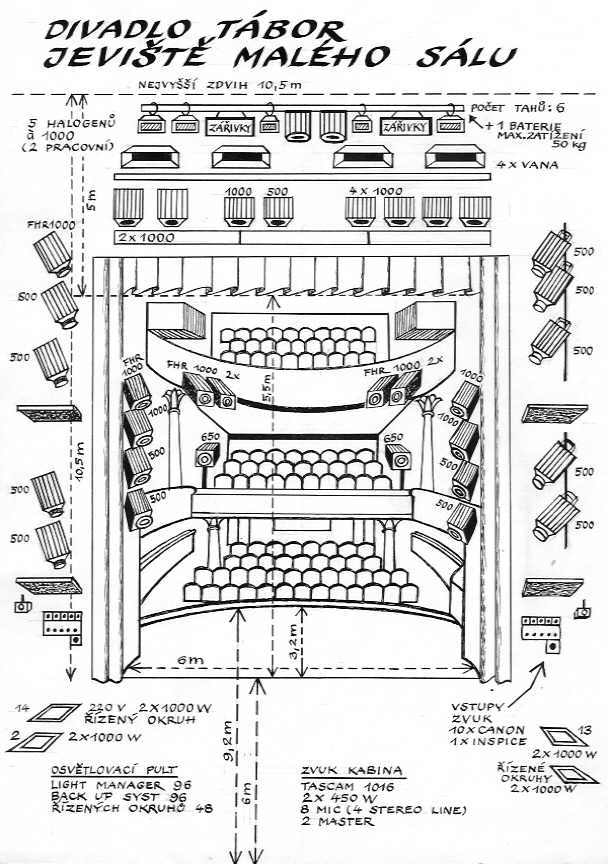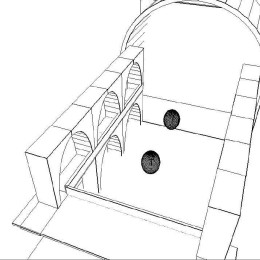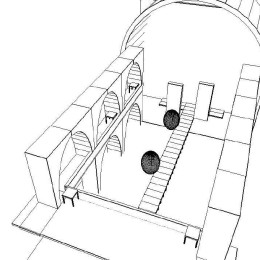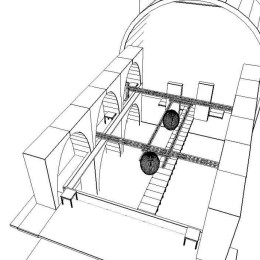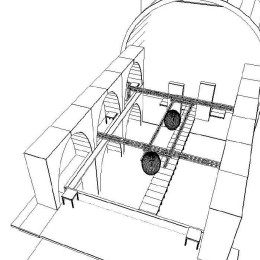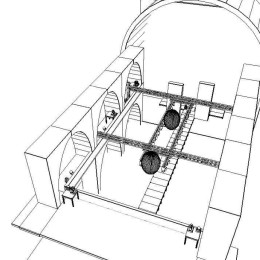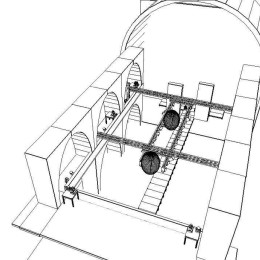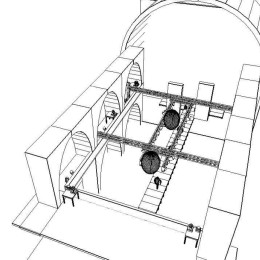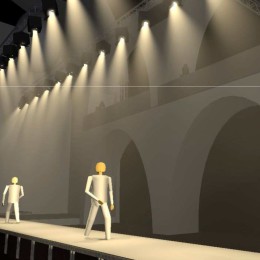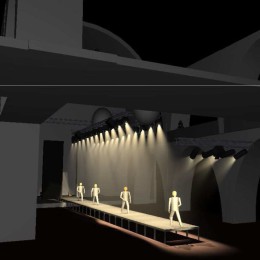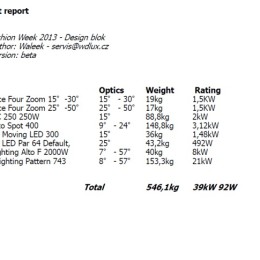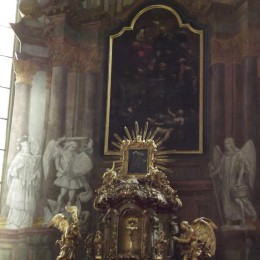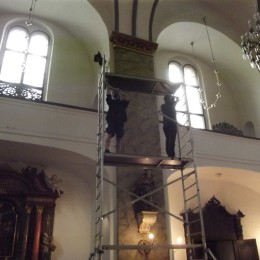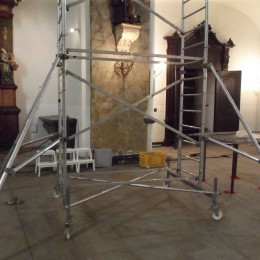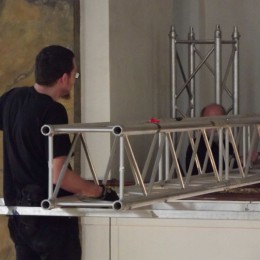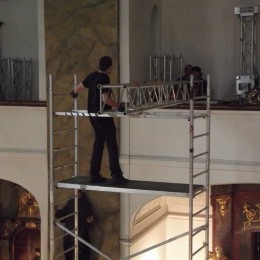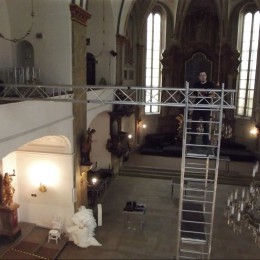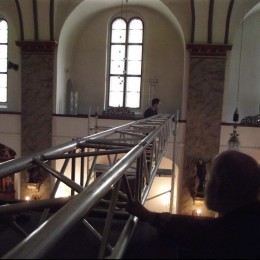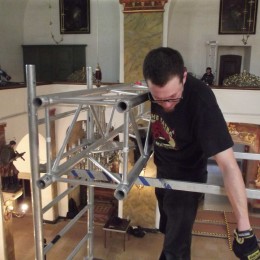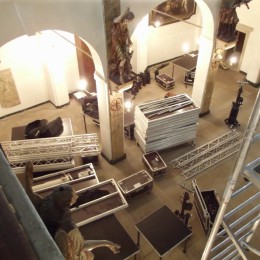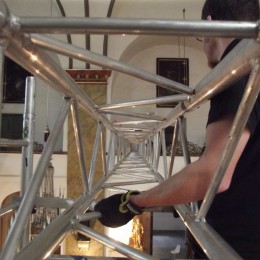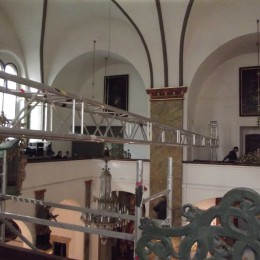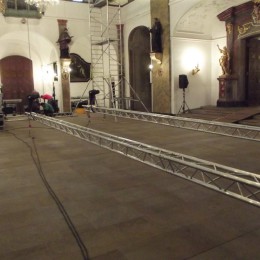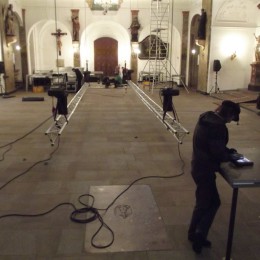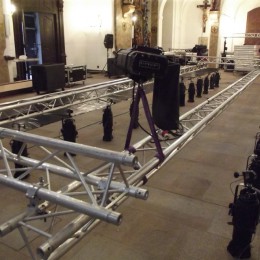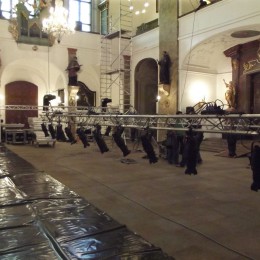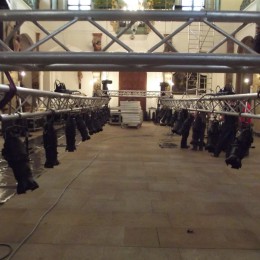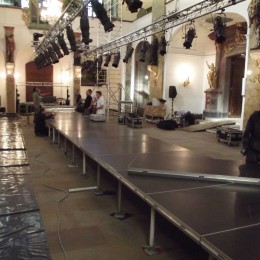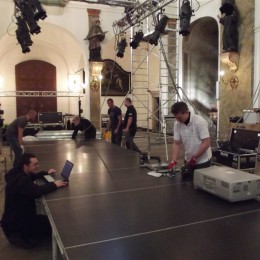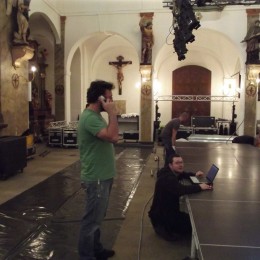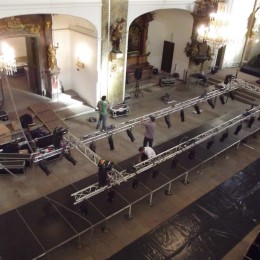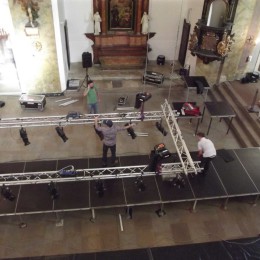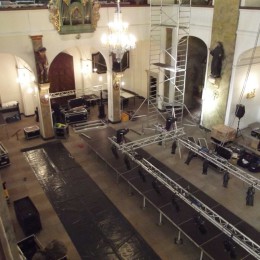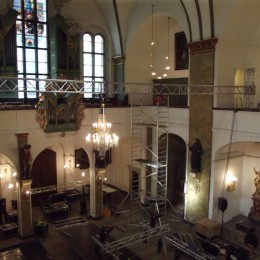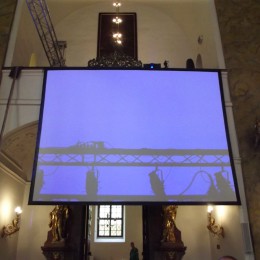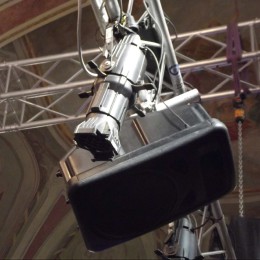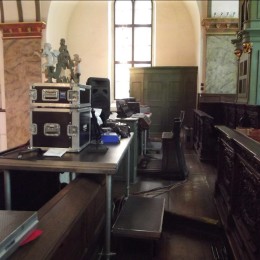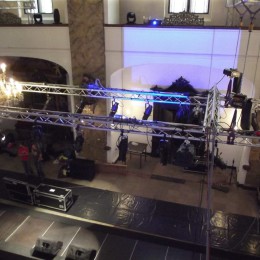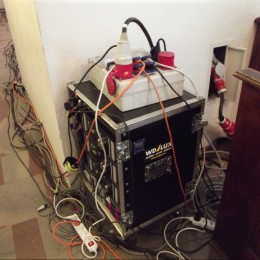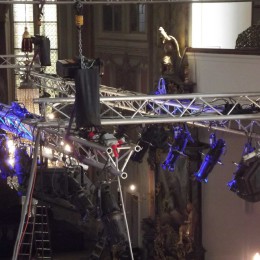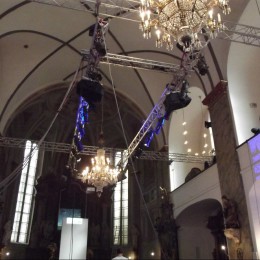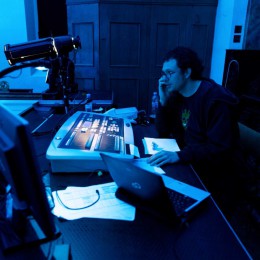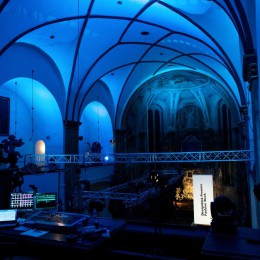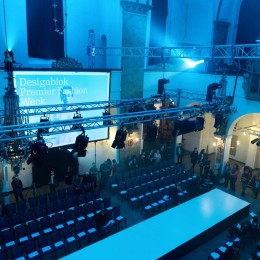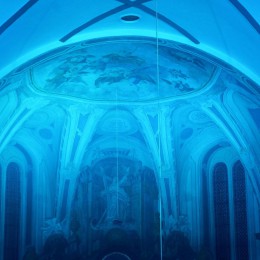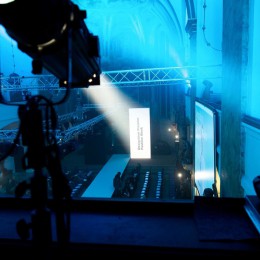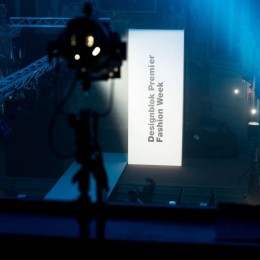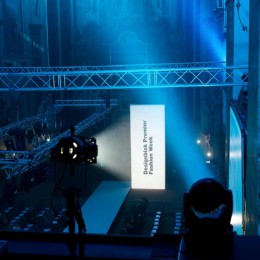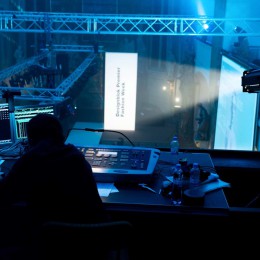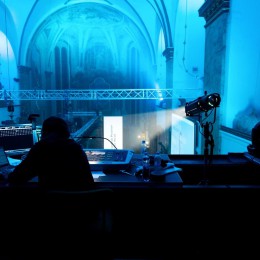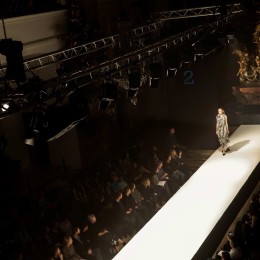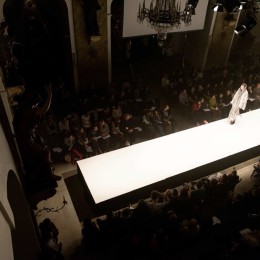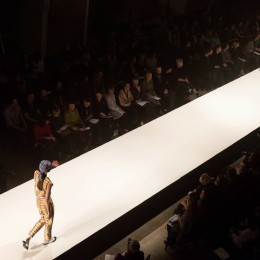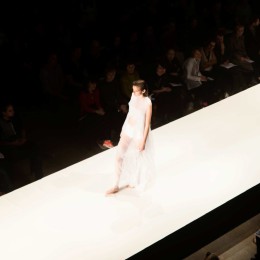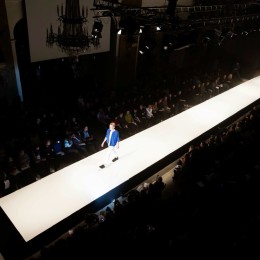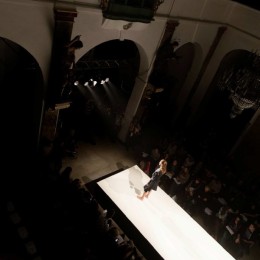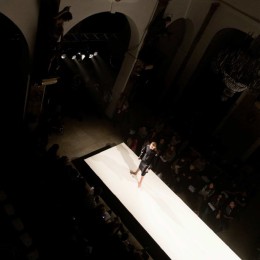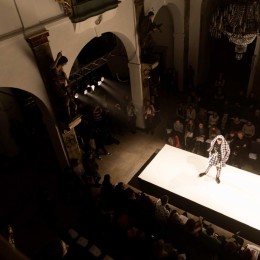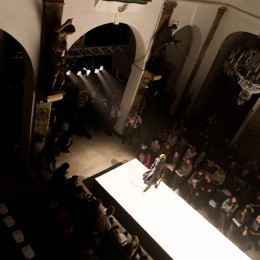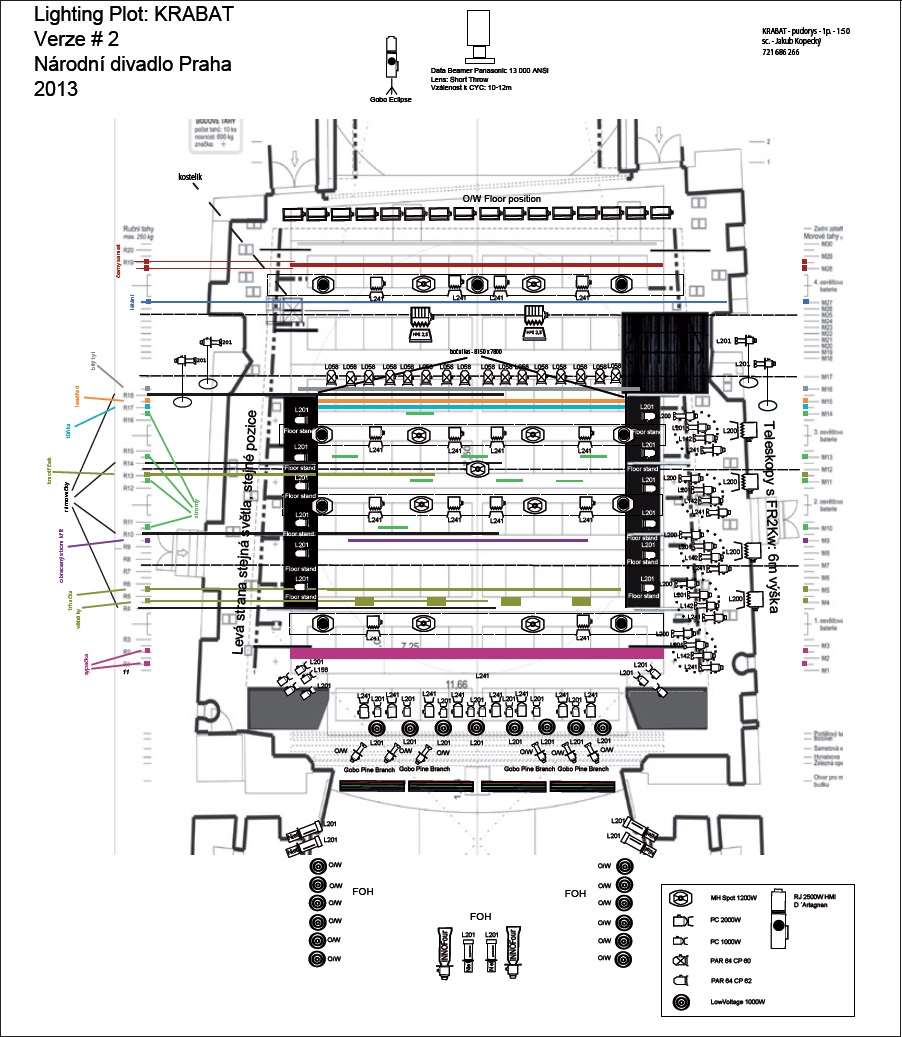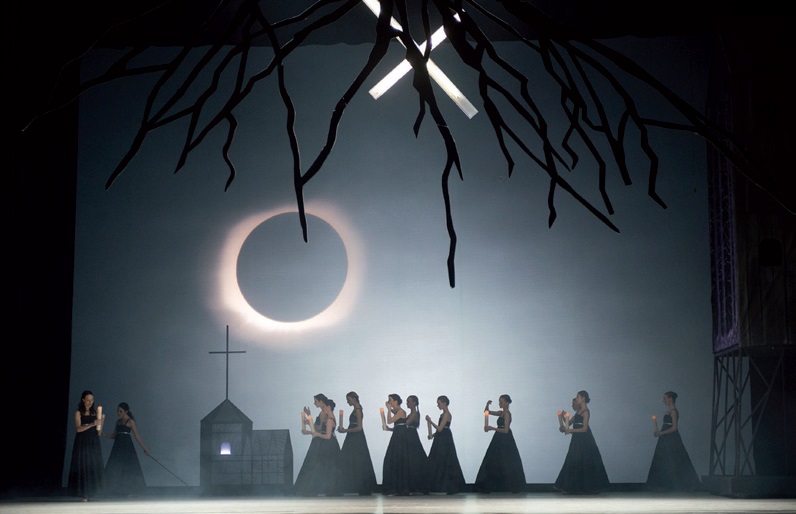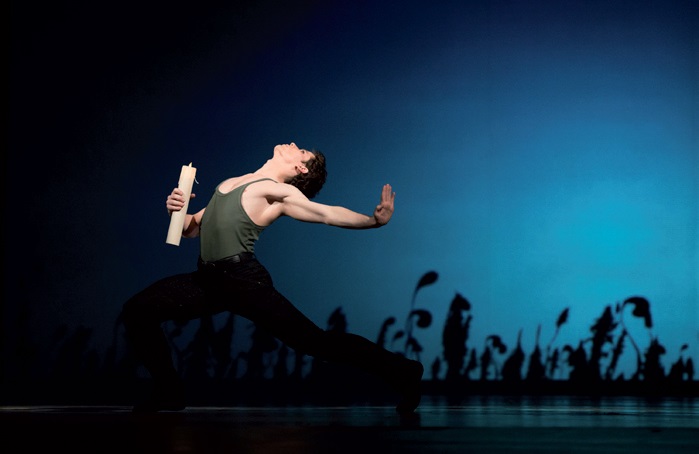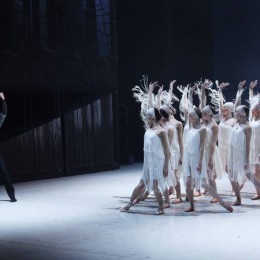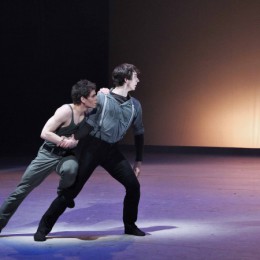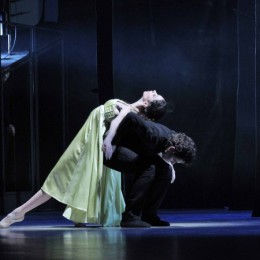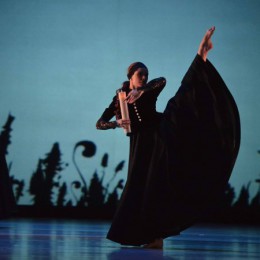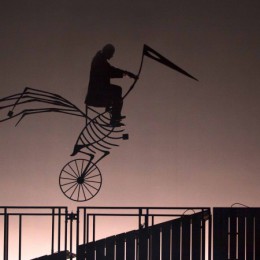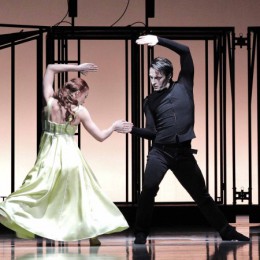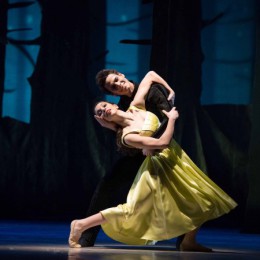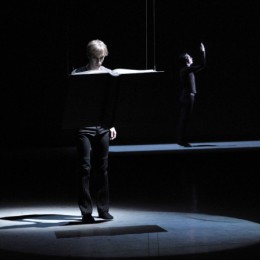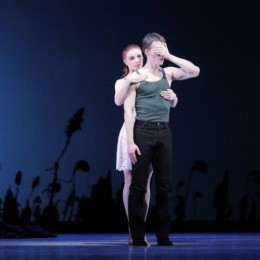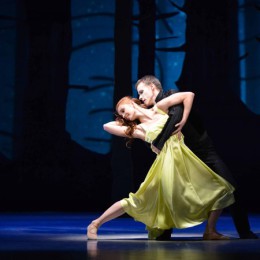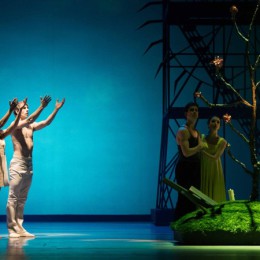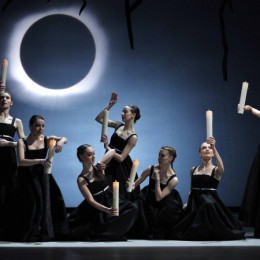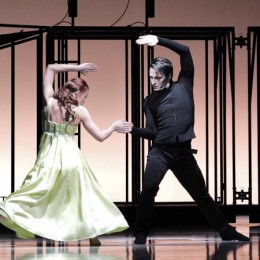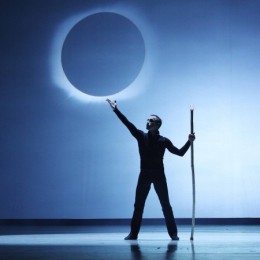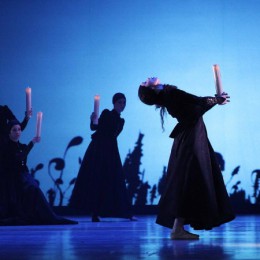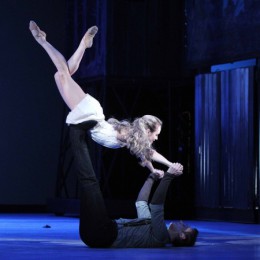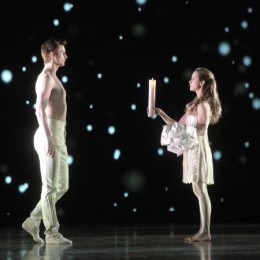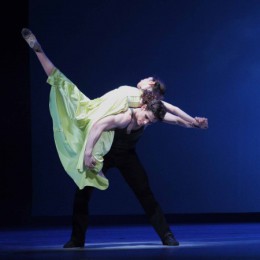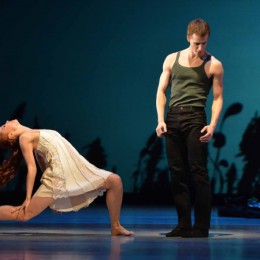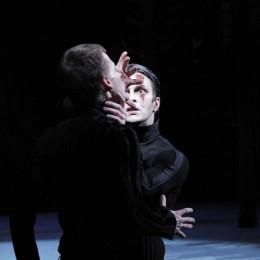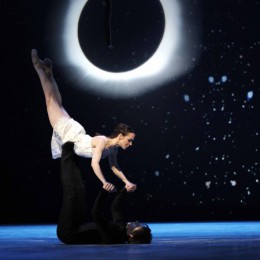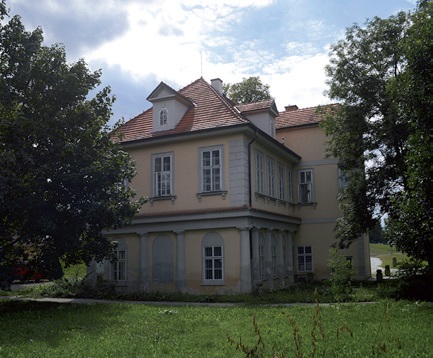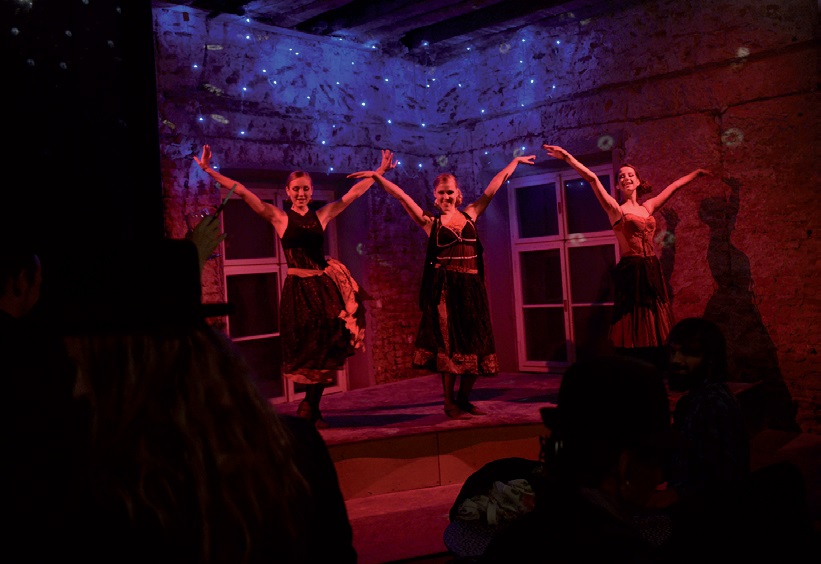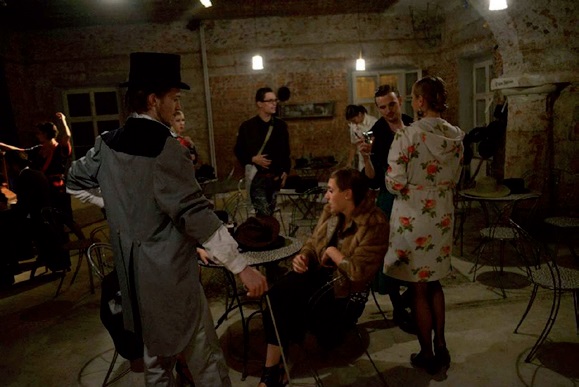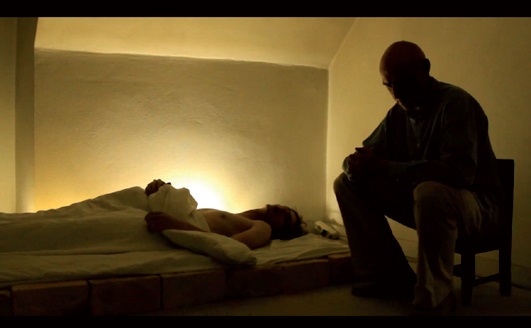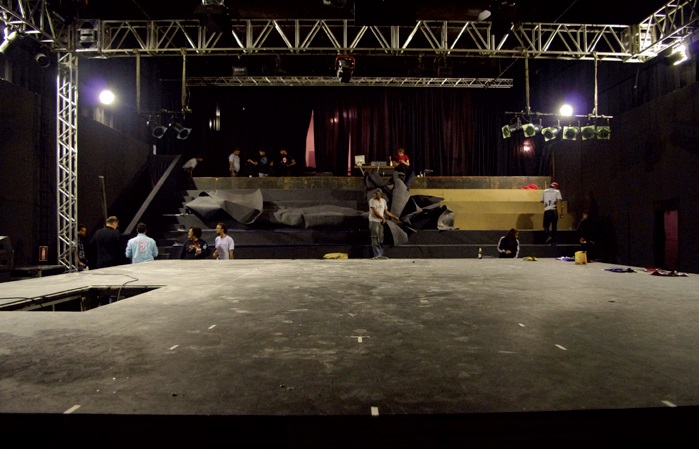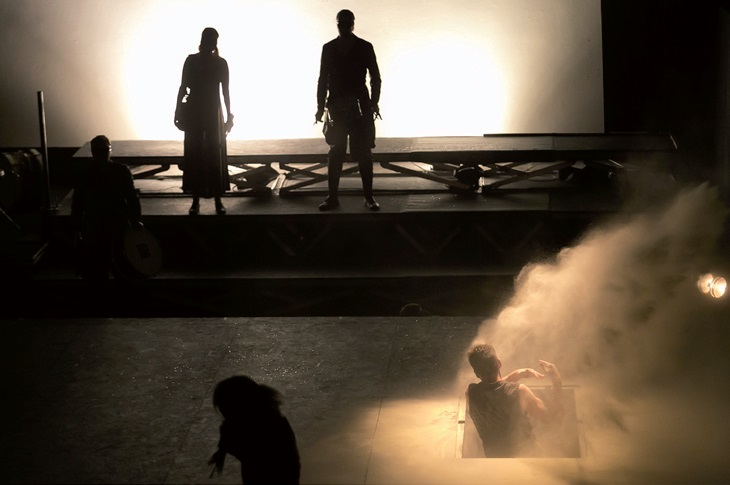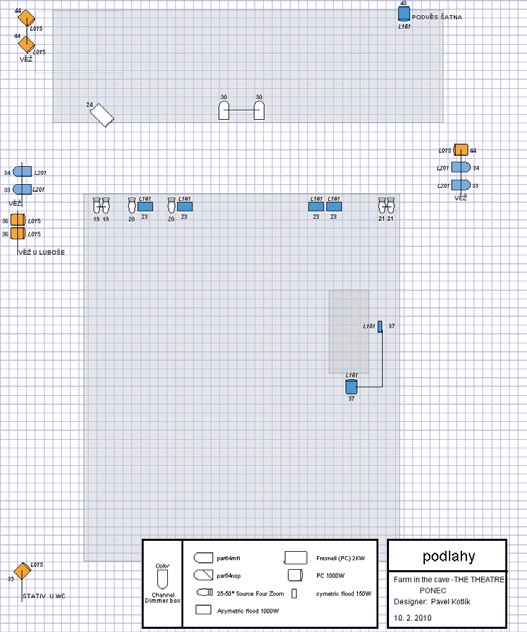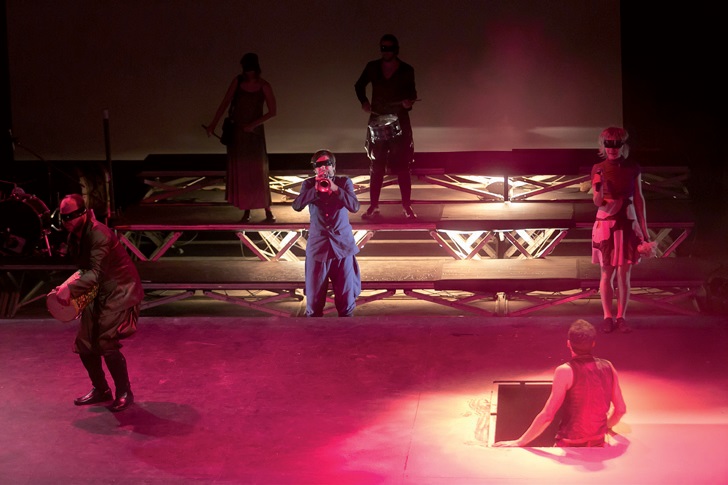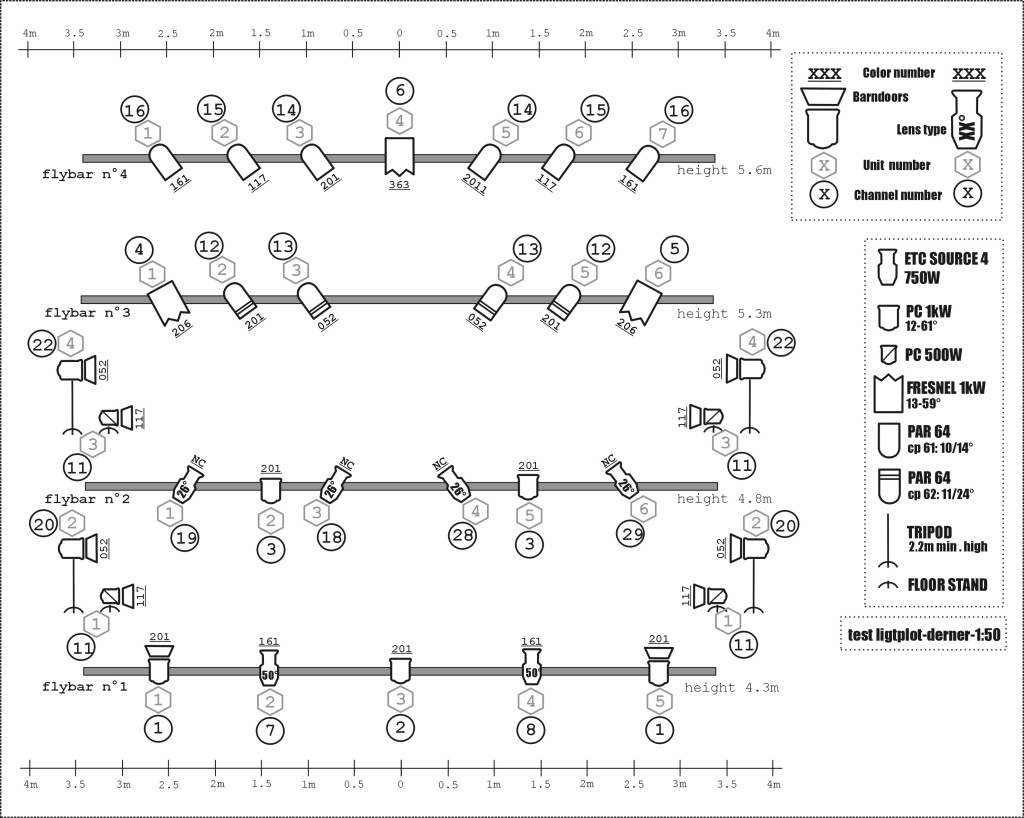LIGHTING DESIGN IS POLITICS WITHIN THE CREATIVE TEAM
Introduction
Any kind of human activity, where more people is involved, requires paperwork. Figuratively, letters are petrified sounds and so the information doesn’t have to rely on the memory. To preserve the image, conceived in the mind of a lighting designer, there have to be means available to support it and to communicate it over the time and space. The sixth lesson of the European Lighting School Knowledge Center deals with the paperwork for lighting design. The goal is to learn how to think about reproduction of a performance in common conditions of theater operation – effective organization of the work and management of technical team, and how to keep understandable, clear documentation.
Topics:
Documentation of a lighting design – light plot, focus chart, cue sheet, technical rider. Touring.
Time requirement for a lesson:
4-6 hours
Author and tutor for the lesson:
The lesson was prepared by Jan Dörner and Wijnand van der Horst with cooperation of Šimon Kočí, Ondřej Růžička, Daniel Tesař, František Fabián and Jan Purkert.
Key terms – definitions are mainly retrieved from Wikipedia.
Photos courtesy of the Institute of Lighting Design. Other sources are quoted at individual pictures as convenient.
Tutor for the lesson is Jan Dörner and Wijnand van der Horst who are available for answering questions between 14th and 31st August of 2015, you can contact them via the contact form at the end of the lesson. Reply is not guaranteed, unless submitted within the given period of time.
Introduction Test
Key terms
Paperwork
Light plot is a document similar to an architectural blueprint to illustrate and communicate the lighting design to the director, other designers and finally the Master Electrician and electrics crew. A light plot contains information about several key settings and instructions for hanging and focusing of the sources of light.
Cue sheet is a form that indicates information about the cue including execution, timing, sequence, intensity (for lights), and volume (for sound).
Channel hookup is a printout of a lighting database that organizes all the lighting information for a stage show by the channel number associated with the lighting equipment and limits the information associated with a particular lighting instrument such that a designer or electrician can access needed information rapidly and efficiently.
Magic Sheet is a pictorial layout of how the lights relate to the stage, a quick reference to every channel and the group of lighting instruments it controls.
Instrument schedule is a listing of all the lighting instruments and information about them used in a show.
Cue is generally the trigger for an action to be carried out at a specific time or a recorded lighting state in a narrower sense.
Rider is a set of requests or demands that a performer sets as criteria for performance.
Patching is the physical (“hard patch”) or virtual (“soft patch”) assignment to a circuit or channel for the purpose of control.
Hard patch is assigned connections between the circuits and the dimmers.
Soft patch is a virtual (“soft patch”) assignment to a circuit or channel for the purpose of control.
Lightwright is a spreadsheet/database program created specifically for theatrical lighting applications.
Fade is a gradual increase or decrease of the intensity of light projected onto the stage.
Fade In is the time between the start of a incoming transition and it’s completion.
DMX512 (Digital Multiplex) is a standard for digital communication networks that are commonly used to control stage lighting and effects.
MIDI Show Control is a significant Real Time System Exclusive extension of the international Musical Instrument Digital Interface (MIDI) standard.
HTP (Highest Takes Precedence)
LTP (Latest Takes Precedent)
Change is a change of one light atmosphere / CUE into another one
Light board operator is the electrician who operates the light board.
Spotlight Operator is a theatrical technician, defined as a lighting technician, who operates a specializedstage lighting instrument known as a followspot.
Lesson 6
To create fine lighting design, it is necessary to plan and communicate well. To be possible to rerun the performance or even to transfer it into another space, city or even country, it’s necessary to do the same thing– to create exact and correct documentation, in which no important detail would be omitted if possible.
Correctly made documentation that is intelligible for all involved is an important step to putting the entire lighting equipment into operation, correct focusing, precise setting of cues, shortly to perfect repetition of the original work of art – lighting design.
Sometimes the entire documentation can be composed of a single page of A4 format, other times, it can be a folder that is as thick as a book. Its content is especially the list of used devices, a map of positions of instruments, a plan of the focus of individual instruments and a list of cues. According to the type and complexity of the performance, there might be the need of other information, photos and pictures.
However, the main component – central point of the documentation- is the light plot.
1. Light plot
The light plot is actually a map that contains positions, number and type of used lighting instruments for the given lighting design, performance, concert, exhibition or whatever requires lighting. It can be made in the computer with the help of special 3D software, in the ordinary CAD program, with a pencil and pen on a drawing board, using templates and thin felt tip pen, or even with a pen on the paper bag for snack.
Its purpose is to unambiguously and effectively hand over the information. It isn’t important how it is created; there is neither any universally accepted “only correct” format. The only important issue is that all the future users will understand it, which means those who will work with it. Let it be technicians who are going to hang the individual fixtures, main electrician who is going to be responsible for the entire set up and light designer himself who is going to handle the performance itself. The light plot should be clearly arranged and most importantly, provided with the Key and Legend, according to which anybody can read and interpret the light plot well, no matter what method is used for its drawing.
Let’s have a look at one large light plot to a musical. We can see a chart of all hanging instruments. This light plot certainly has other pages as well where lights that are fixed in the scenery set would be drawn as well etc. Let’s focus now only to this most extensive and most important part.
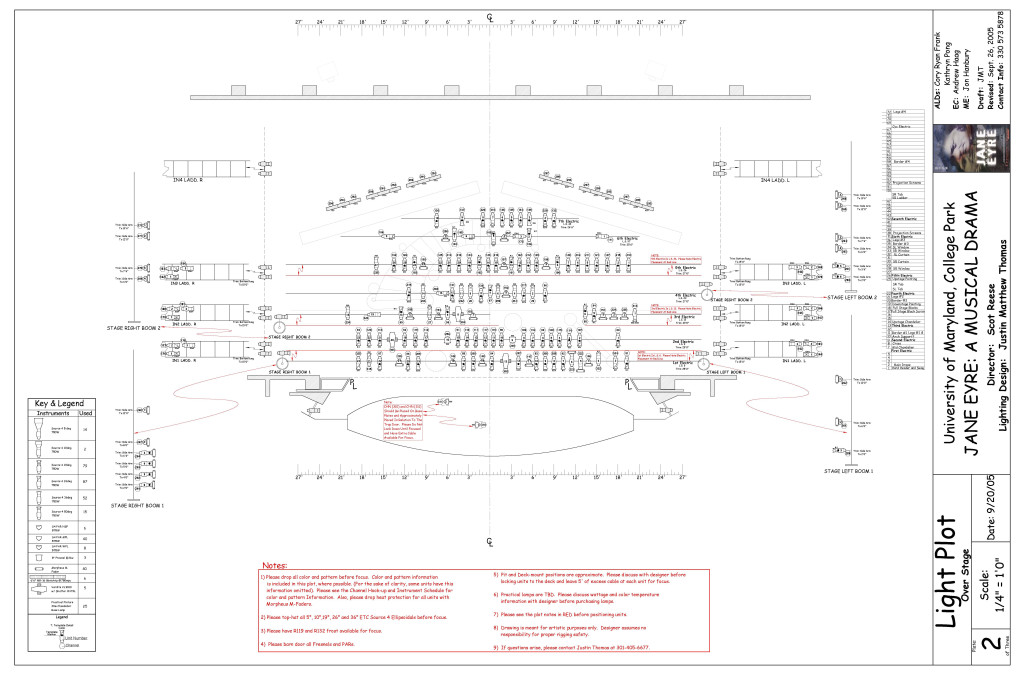
A comprehensive light plot for large musical production that contains all the elements necessary for precise operation of all the lighting instruments that is to perfect repetition of the original lighting design. Note the frame around the entire plan. This secures that all its users can be sure that they have it complete and that no piece of it hasn’t got lost for instance during printing.
1.1 Information
The name of the performance, specific space for which is the set up designed, premiere date, creators – this is very important information as well. There is also the scale, in which the light plot is drawn. According to it and by using a ruler, it is easy to find out also the distances that are not stated at the plot. Further, the number of the second plate out of three and a note ’over stage’, which indicates that this is only a part of the whole light plot. At the other pages, there will be certainly instruments installed into the set etc. that wouldn’t fit into the plot or that would have made it unclear.
What should a light plot contain?
-The type of the plot – it is the single one, or there are other with more detailed information?
-Date and number of the version
-Authorship
-Dimensions
-Main elements at the stage
-Heights – supplement of a section, where the altitude of positions is available.
-Contact information
-Measure
-Date
-Software
1.2 Key
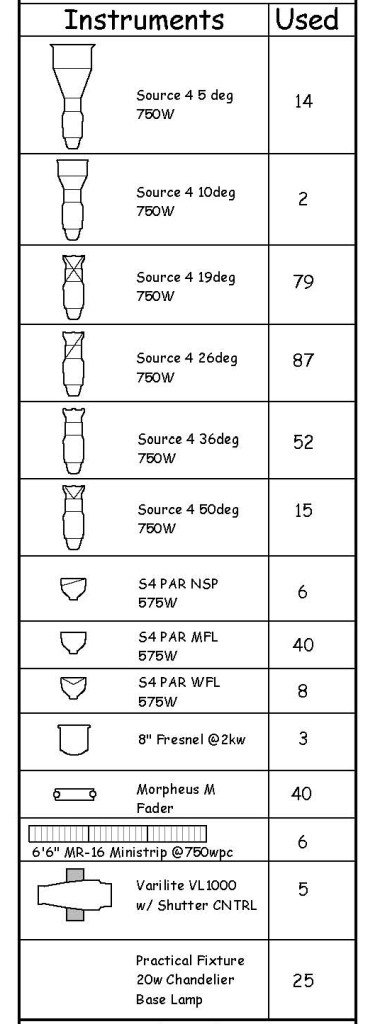
The lighting instruments are represented by symbols in the light plot. The Key shows clearly, which symbol stands for what. Furthermore here, there is shown in the right column, how many lighting instruments are used, which is great help from the creator of the light plot to anybody who for instance was about to order lighting devices.
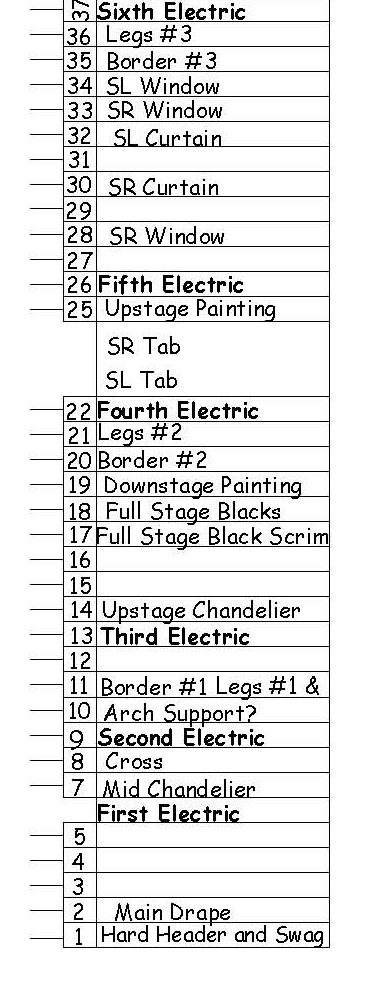
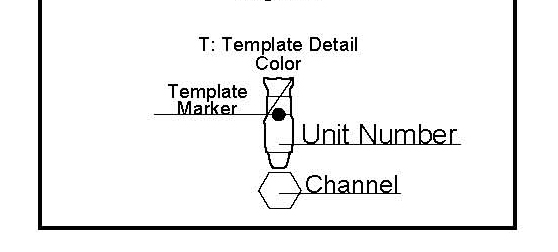
The key clarifies the meaning of all the numbers, which appear at the light plot in connection to individual devices.
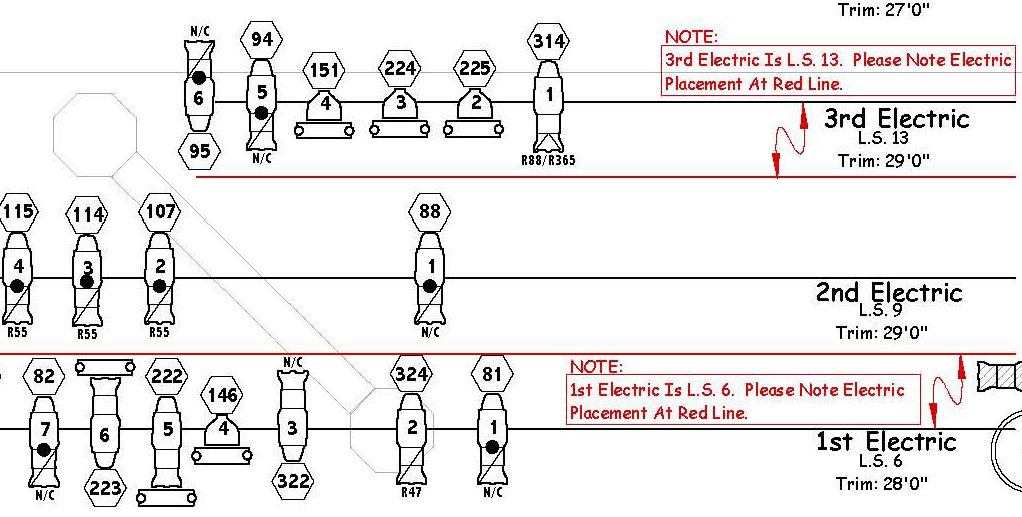
A detail of the plot, where numbering of individual lighting instruments can be seen. Each hanging position has its name. Here, the fly bars of hanging lights are named as 1st electric, 2nd electric etc. – numbered from the auditorium towards the rear. Each instrument at each bar has its own number, here numbered from right to left. If each of instruments has a clear indication that is composed of position and number, it is possible to work better with it, simply everybody knows, which instrument is being talked about. Further, it is clear from the image, how high and on which fly bar the individual instruments are hanging. Notice as well that they are not plotted precisely at their respective positions because of shortage of space. The position of hanging is determined by red line. And that is indicated in the note.
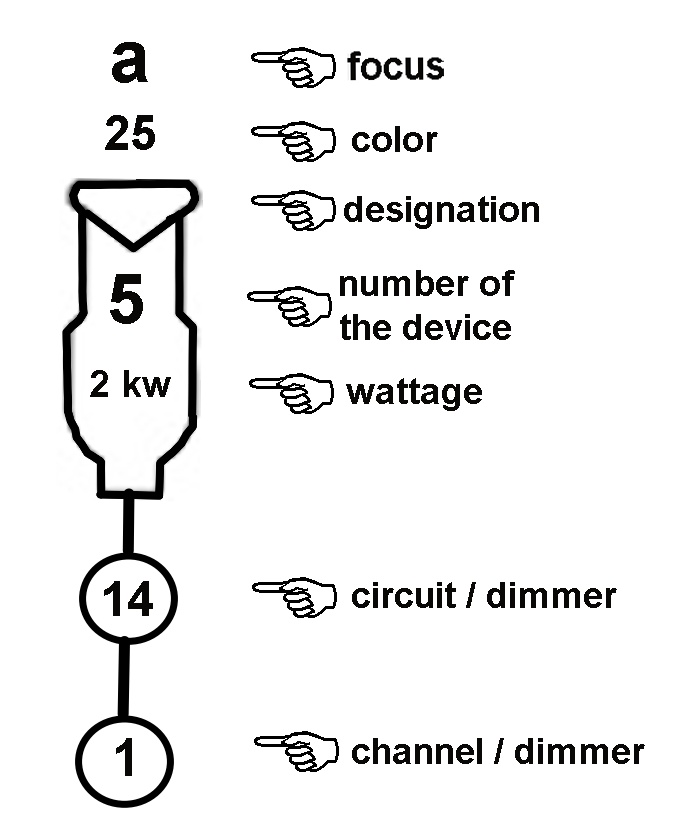
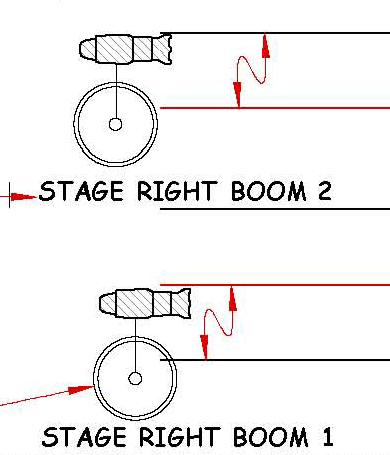
This is how there are drawn the exact positions in the plot, where booms stands and ladders hangs. Mounting of the booms and ladders themselves is drawn at the plot wherever there is place and is connected to the exact position with an arrow. In such a way, position and content is drawn in a clear and unambiguous manner.

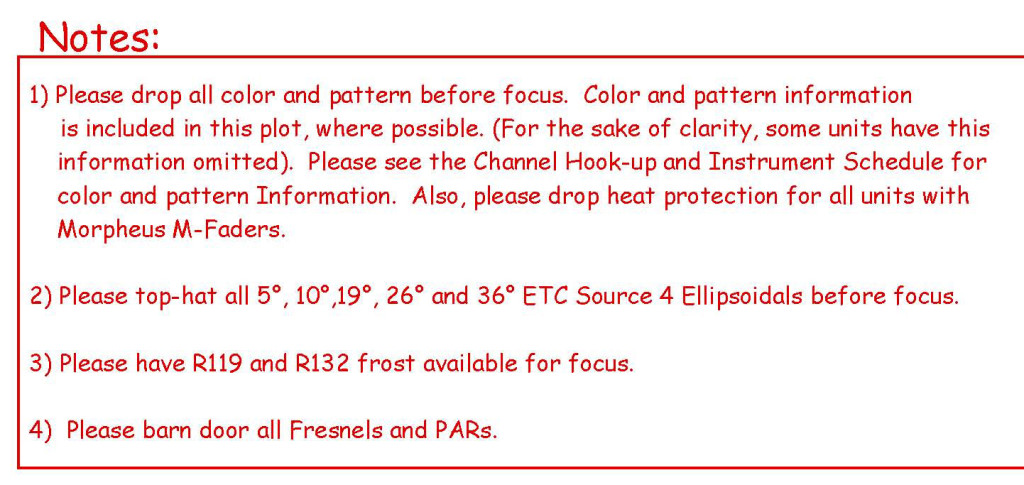
The light plot contains other notes as well, which are indispensable for a correct set up or focus respectively.
1.3 Templates
Original templates of various manufacturers. The symbols of lighting instruments are drawn in a scale.
Ordinary templates, which can be used for drawing a light plot. It’s just sufficient to imagine that a circle would be a symbol for a Fresnell and a square for a profile. It’s quite arbitrary. It’s only important to describe well the symbols in the legend.
1.4 Examples

A manually made, quickly drafted light plot for the theater Alfred in the Courtyard. Nor heights neither distances are plotted on the picture. The plan serves for quick orientation and was sufficient enough for a fast set up at the place in the presence of the lighting designer.
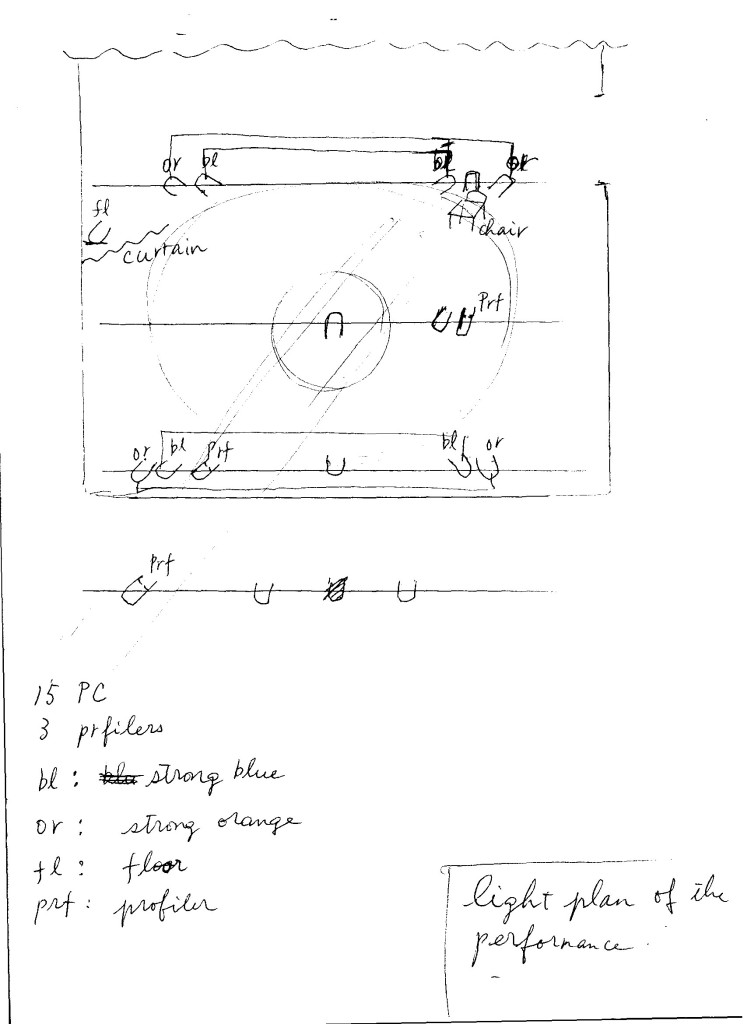
Almost a comical light plot, which arrived by a fax from a performer. Despite of it, it served well for the set up and a good performance came into existence on its basis.

A terrible light plot, serving only to quick registering of a position and connection of instruments. It’s sufficient for orientation for a lighting technician during touring and with a minimum of time, not for the future existence of the performance.
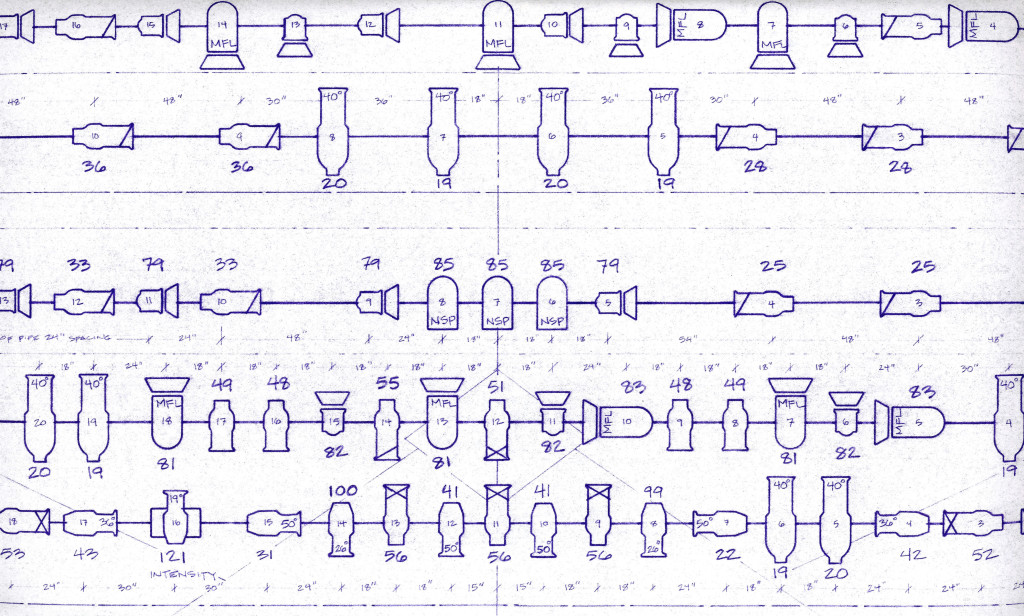
A detail of a light plot, drafted manually by a pencil with help of templates and outlined by a pen, including dimensioned pitches, numbers of devices and numbers of channels.
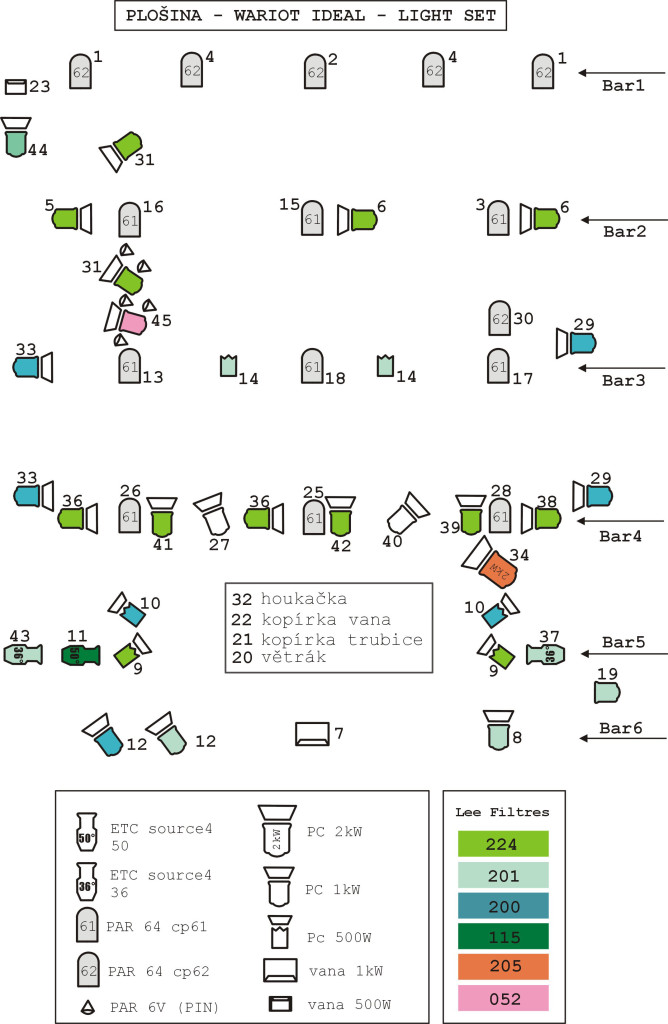
A light plot, created in the drawing program Coreldraw, where the author created the symbols of lighting instruments according to the FIELD templates so he can process light plots digitally, without using specialized software.

A light plot, created in the old version of CAD program. Symbols are a part of the library in the program. It’s actually still a sort of “drawing to the template”, only in a digital way.
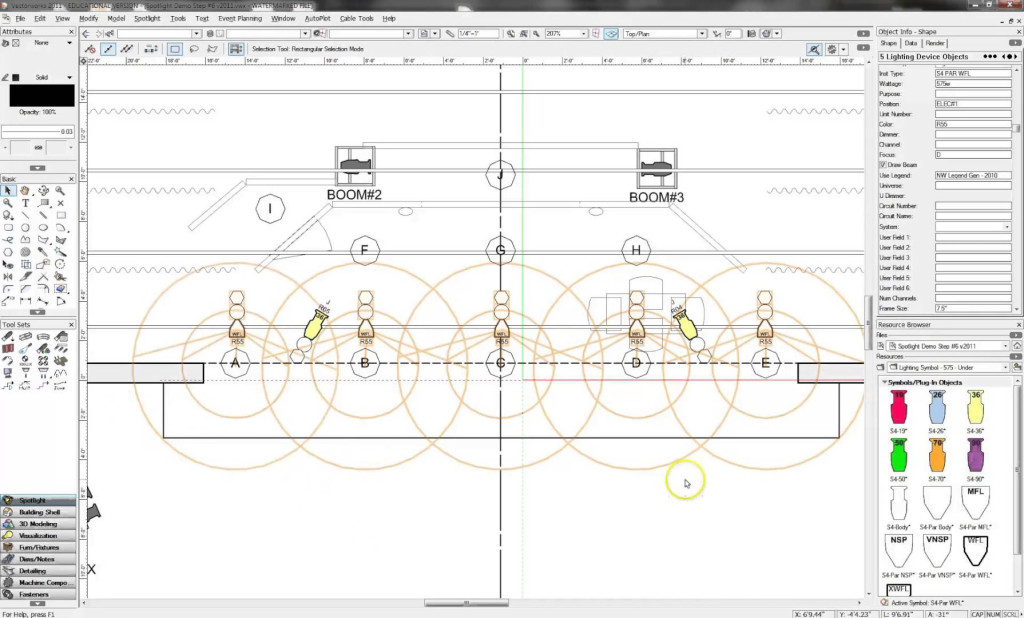
Creation of a light plot in the program Vectorworks. Specialized programs contain libraries of almost all manufacturers of lighting instruments, some can automatically count the number of circuits, input, list of instruments etc. At giant shows, it’s an invaluable auxiliary, which can do a lot of boring work instead of a lighting designer.
Mamma Mia
A light plot for the touring version of the performance Mamma Mia, which was created in the program VectorWorks. At a closer look, one is amazed by the quantity of details, notes, information about the focus, colors of scrollers, further details about hanging, etc. A section of the theatre is also a part of the plot, where it is possible not only to count individual heights of fly bars, but also angles, under which the spectators would watch the performance from individual floors of the auditorium and their “contact” with the lighting technology.
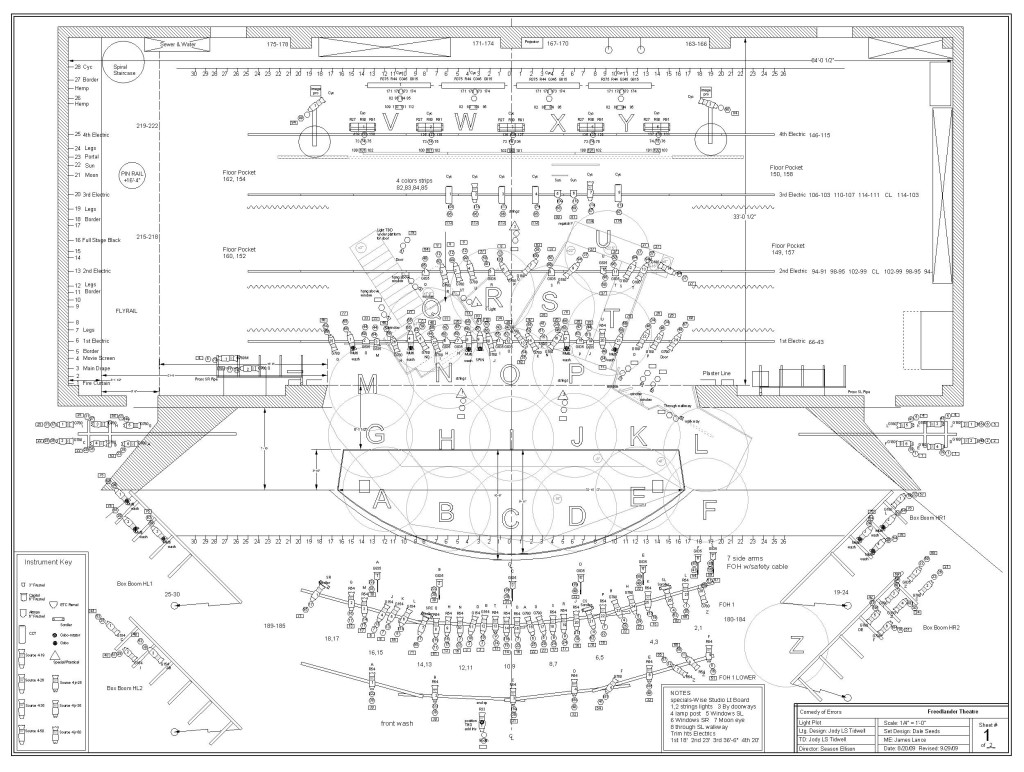
TThis light plot provides a letter that denotes its focus at each instrument. The plot is divided into individual sections that are marked by the respective letters. Thus this light plot becomes to be a focus sheet, another piece of documentation, which will be the topic of the next section.
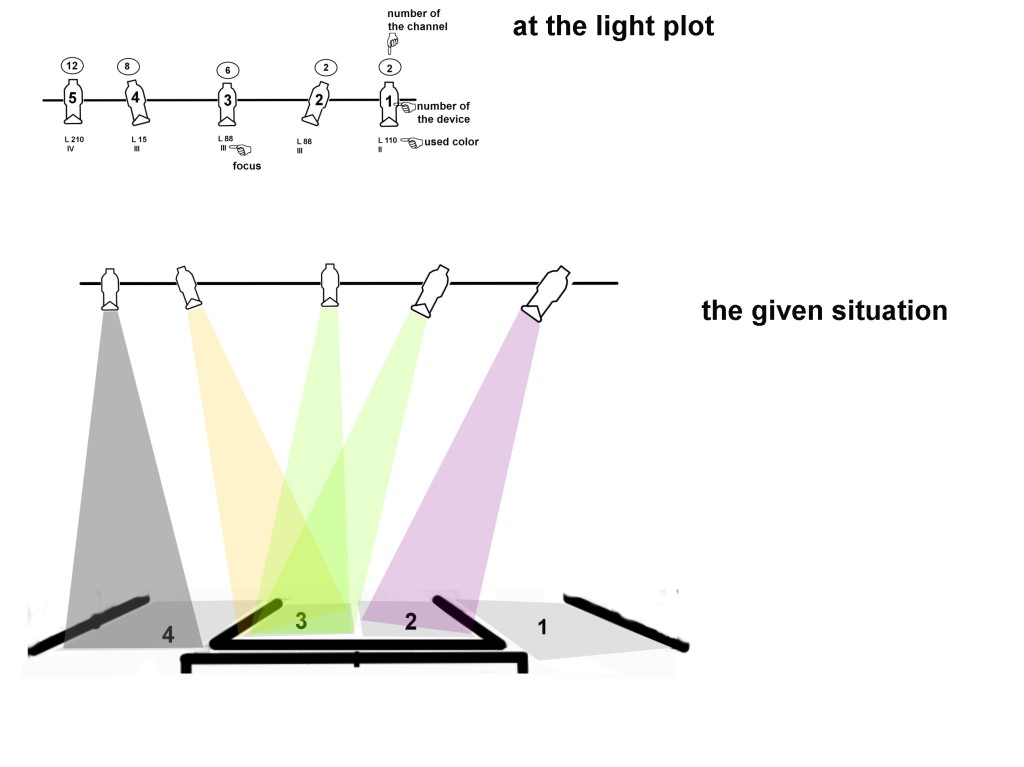
2. Focus sheet
Similarly as a light plot serves as a plan for correct hanging of lighting units – set up, a focus sheet serves for correct instrument focusing. In some cases, the light plot and focus sheet can be overlaid on a single sheet. However, it’s usually a separate document, which indicates clear instructions to the focus itself of individual fixtures. It can concern a sort of a script in pictures, in which the precise trajectory of the light beam is plotted or it might be a chart, in which all the fixtures or their groups are recorded and the focus is described in words. Some of special programs can make 3D visualization and it is not uncommon in the contemporary digital era to record the focus of the instrument as a photo with a phone… Often, it is necessary to combine various approaches to create a good focus sheet. It is sometimes easier to draw a part of scenery set into it and the approximate shape of the light beam, another time, it is possible to precisely describe the same with words and sometimes, a photo can help.
As a focus sheet, usually also the so called magic sheet can be used. A magic sheet (sometimes referred to as a “cheat sheet”) is a quick reference, usually only one or two pages long, giving quick visual access to the lighting designer, sorted by purpose, to each channel and the fixture(s) it controls and focus.
However, a magic sheet, because of its nature, can only hand over the information only to a lighting designer who himself has drawn it for his own needs. A focus sheet should be more comprehensible for other members of the team as well.
A good focus sheet, similarly as a good light plot, transfers information to other people in an intelligible way. After first several performances, focusing of a performance is going to be executed usually by a chief lighting technician with a team of technicians, not the lighting designer. During a new presentation in a different city, it might be perhaps an assistant of the lighting designer or whoever would be in charge of it. And last but not least, not even the lighting designer can remember every detail, which he has created during his feverish efforts.
For that reason, it is necessary to pay as large attention to the focus sheet as to the light plot. It can be said that in an ideal world, a professional who hasn’t seen the given piece should be able to focus the performance according to a well written focus sheet.
There are several important attributes, which are important for the focus that should be recorded in a focus sheet.
The number of the fixture, respectively channel or dimmer, under which the fixture is controlled.
Direction and dimension of the light beam (to where the light beam from the fixture is directed)
An example: forestage right, half a meter onto the proscenium arch.
Shape of the light beam – are the barn doors used? Or Gobo by profiles? Is it focused or blurred? How is the Gobo turned?
The type of the fixture, position of the fixture, color (it’s often marked in the light plot and so it’s not important for the focus itself. Still, a focus sheet should contain such information for the better orientation).
Intensity (sometimes it’s beneficial to note into the focus sheet the maximal intensity, for which the given instrument is used and to focus it at this intensity)
Other information (sometimes it’s necessary to check focus for instance with another scenery piece, instead of the one the fixture was focused to. A note should help not to forget to check the focus with a changed scenery piece)
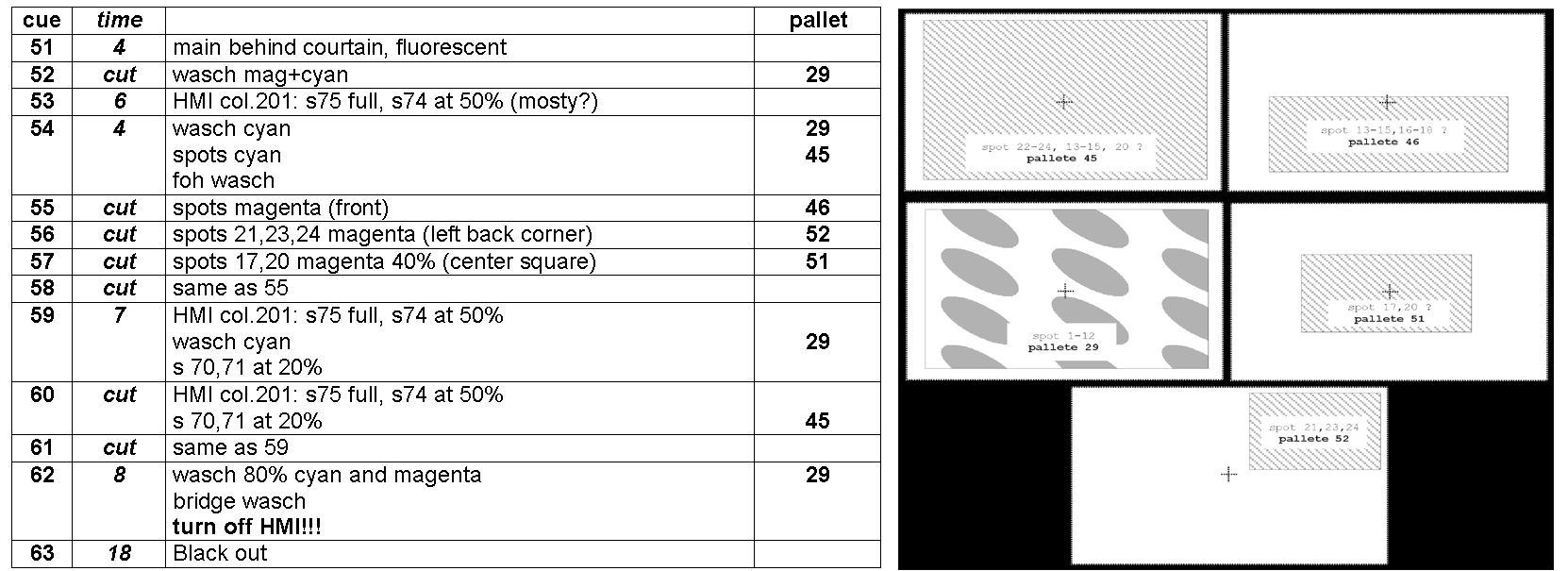
The five images contain plotted focus of spot lights ( spots are set up automatically, the images of the focus are here only for control and they originally served as a magic sheet at the same time) and a cue sheet, which is going to be a topic of the next segment.
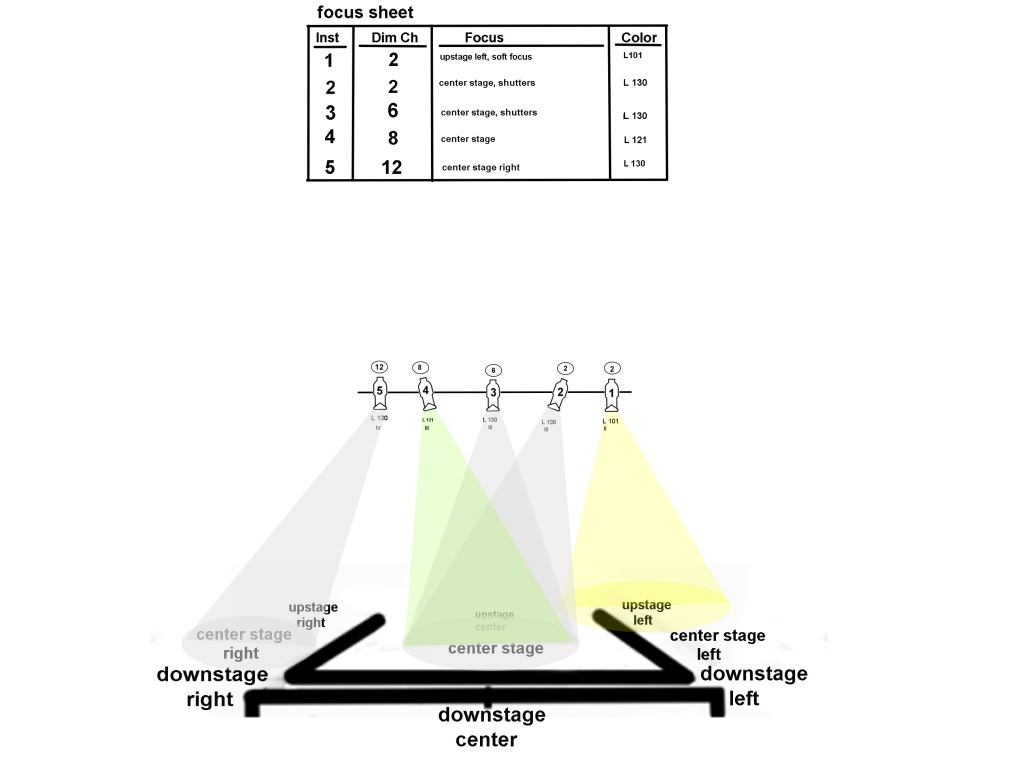
A focus sheet provides information to where the individual lights or groups are going to be directed. Similarly as there is a great variety of spaces, also the necessary information that might be conveyed in the chart would vary. Generally, it would contain a dimmer channel, focus area and color.
3. Cue sheet
A cue sheet is a document where all the cues, which are contained in the performance, are recorded. In essence, it is actually a lighting script, which says when and which lighting cue will be on in a given moment at the stage.
In order to have the documentation of cues complete, it should contain the time of fading in and fading out of individual cues apart of the number of the cue. Possibly other attributes concerning time (Delay, wait, followOn, Loop, Link).
It may include information when the light change will be executed. (“Romeo comes”, “with new music” or an extract from dialogue with marked place when it is necessary to execute the change)
Furthermore, it may contain the content of the light change as well (blue backlight wash at FULL, warm sidelights set at 45%, front ramp at 20%), or just a short note (morning atmosphere). That might help to an operator to good orientation during the show.
But definitely, at least those cues should be always marked, which don’t contain any lights – that is blackout. That is for many good reasons as any operator can confirm that.
A cue sheet can be complemented by a script of follow spots. It is so recorded, which follow spot is directed on which performer and other details at each light change.
There is no standard for a cue sheet as there’s any for a light plot or focus sheet. Some have individual cues noted in the script with a pencil; others prefer a list of cues with its content that is itemized in detail. When there is a frequent rerun, some operators don’t even use any cue sheet anymore, they simply “remember” the performance. That doesn’t change the fact that a detailed cue sheet is a component of a good documentation.
4. Additional documentation
Groups, palletes
A list of groups, palettes and libraries, which are used during programming of modern lighting consoles, appears already at the magic sheet, respectively they are written down in the focus sheet, by the majority of lighting designers. But they can be an individual and very useful document. Notice them at the light plot for the Mamma Mia performance above.
List of used lighting instruments
A list of used lighting instruments serves for easier preparation of the performance and it’s indispensable especially when it is played at various locations with large time spans. The chief lighting technician, lighting designer and any technician so can get quickly to the information what is necessary for the performance, what has to be found, repaired, bought, ordered…
It should contain a list and number of each type of an instrument, their power input, their method of hanging, if something is necessary to it as barn doors, Gobo holder, Iris, scroller… Number of tripods, booms, hanging hooks, safeties, a list of used cables including the length and other things that are necessary for plugging in of the whole lighting park, last but not least the number and power output of dimmers.
The list usually has a form of a table where all is meticulously recorded and some sophisticated software programs for creation of light plots are able to compile such a list almost automatically.
List of used color filters
A list of used color filters complements the list of used instruments. There should be stated their number and each dimension, according to the type of used instruments. If color scrollers are used, a list of colors in each scroller should be recorded in the document as well.
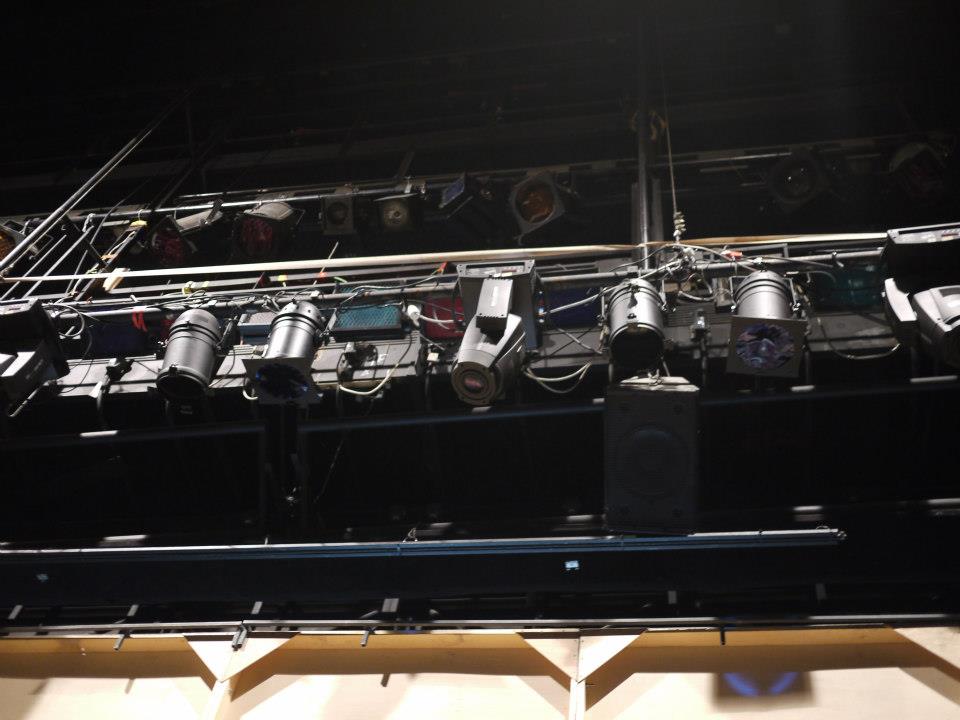
5. Touring
Transfer of original lighting design
It is hard to generalize across the time and space about the art. It is no different in the lighting design of live events (theater, concerts and other events with stage lighting – galas, fashion shows etc.). Lighting design is dependent as an artistic and technical component on the vision of the director and set designer of the given performance or event, and also on the technical possibilities of the space. It follows from it that everything is connected to everything, plus the range of possible variations and combinations is so wide that it is impossible to give a strict, specific manual on how to manage the transfer. However, some rules, or connections, if you will, can be formulated about the laws that are valid almost every time. First, it is necessary to have a look at the points of departure at the very basis.
Any permanent theater building all over the world has its system of stage lighting, which is fixed, unalterable for the most part. But it is usually possible to have spotlights or instruments added onto other positions on the stage as needed, to which lighting units can be safely fixed and connected. However, there are theatrical spaces, which stage lighting is very variable, i.e. there is a system available that is ready to be essentially adjusted according to a request or instructions of a given performance from the structure through connection to control. Therefore in any theater space, there are, say, several parts of the lighting system that are more or less similar but never the same – and that is just the “rub”. These parts can be divided as follows:
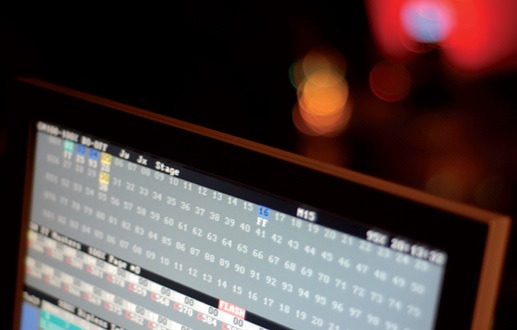
Control of the lights in another space proves abilities of any lighting designer; the principles, on which contemporary lighting consoles operate, are similar, yet each brand has its own peculiarities; work on a console in a different environment (mostly under time pressure and often without the operator of the console) thus examine experience and knowledge (a console of the firm LT).
- power supply issue
- control issue
- positions issue
- material equipment issue
5.1 Power supply issue
The part of the power supply concerns a switchgear or where there is a connection to a power source – it may be an electrical network or (in exterior spaces) mobile generator. The power part of the stage lighting is also a part of it, which means in particular dimmers, switching of power supply circuits (unregulated circuits controlled by a lighting console operator and additional lighting units, which cannot be controlled by dimmers, e.g. moving heads, LED instruments, hazers, foggers, etc. .), and circuits supplying other related technologies or other parts of the lighting (e.g. lighting of the auditorium and adjacent areas – foyer, cloak rooms, staircases, working lights used in the preparations, but also equally important emergency lighting).
5.2 Control issue
The control area is the space from where the power supply part is managed and controlled. In theater buildings, it is the booth, or cabin, usually located behind the auditorium (even today it is possible to find functional rooms of cabins under the stage, on the stage in the proscenium arch, etc..), in the case of theatrical space outside the theater building’s mostly a “live post” – a place where there is a lighting control desk or another auxiliary panel to control the other elements. It should be noted that the lighting control is often next to the sound booth or both are located in one place. In small venues, lighting and sound is often controlled by one technician, while there may be multiple lighting and sound technicians in large venues during the preparations and the performance.
5.3 Position issue
The position part is that part of the stage lighting systems, which determines the position, the location where the area contains instruments and other lighting or technical devices. It determines the additional options of connection for added lighting technology at the same time. The position part has several functional subsections that should be present in any area. It particularly concerns the positions for: front lighting (instruments placed in front of the auditorium or in front of the stage – the abbreviation FOH ( front of the house) became usual, i.e. everything that is in front of the stage, curtain, play area), side lighting (instruments placed at the flank and sides of the stage), back lighting (instruments at the rear of the stage used for backlighting), lighting from above (lights located directly above the acting area for the creation of so-called down lighting) and light from the below or from the level of the floor of the stage.
5.4 Material issue
The aforementioned is a base for any lighting of a stage. A part of material equipment contains all things in addition to the range of instruments and lights installed in a fixed way in the given space. For variable systems, it is a list of all that is available. Therefore they are the lighting devices that are being added according to the need of the vision of the director or set designer. And this also includes the extension or communication cables, filters for coloring instruments and various other devices related to stage lighting (hooks, hanging tools, tripods, stands, security cables, data converters and many others).
6. Issues and complications
The already mentioned rub lies in the fact that every theater space and stage lighting system are different, they don’t have the same facilities and possibilities as the domestic venue where the performance was created and implemented. The starting pitfalls are just the spatial, architectural solutions of theatrical spaces. Stages are of different sizes, which causes the need to adapt the set design to a different dimensions. It’s obvious that large stage design can be difficult to be built into a smaller theater. It depends, however, on the principle of set design – if the scenery is made of huge wings, which cannot be reduced, the performance is not executable on a smaller stage. The situation is different if the stage set includes several scenic elements (e.g., a table and chairs, wardrobe and coat hanger), which placement is possible to “shrink” – then there is no problem to fit it into a smaller stage. But the insertion of a small scenery set into larger theater can also be problematic, but that can be mostly saved by appropriately placed black flats and legs that reduce the dimension of the area and screen the view into the backstage area. A common problem is also the access door to the stage on the opposite side than at the domestic venue. Touring theater companies have to improvise and adapt to local dispositions in so many times at the outside venues. Other problems may arise with the placement of the stage equipment (turntable, fly bars, etc.).
If, however, a stage set is solved and built, there comes the light and sound. The sound would be easier than lights in this respect, but if anything else is a part of the stage set, like surround sound (quadraphonics, system 5.1 or 7.1, etc.), multiple microphones that are in an insufficient number in the theater facilities or it is impossible to connect and to control microphones at all, not to mention the connection of live bands, and sound technicians would have a lot to deal with.
But here the primary concern is the lighting. Light positions are differently located in dependence on their architectural solution in theater buildings. This affects the lighting angles, and thus it is not possible to cast light onto the stage as well as at “home” venue. Front lighting positions can be further, so that the front light at a smaller angle can for instance interfere with projection screen or inappropriately illuminate the rear section of the stage.
Side lights can be placed lower than the side walls of stage set and therefore they are often completely useless. Back lighting may not be available at all. The problem can be an insufficient number of lights on lighting positions, less number of controllable circuits, almost no other available, additional equipment, or this equipment does not match the types of instruments, intelligent lights may not be available at all. Especially at festivals where there is a lot of touring troupes, it is also necessary to correctly estimate and determine the time for all the preparations and even to have extra time for actors’ rehearsal, for them to be able to be orientated in the new space and to find the light.
How to solve everything?
6.1 Rule N. 1
– to be prepared
Each performance has its specific technical requirements, to which one should comply as much as possible and that is sometimes impossible. Therefore it’s necessary to communicate in advance and eliminate possible problems. Something can be resolved with a compromise, but there may be situations where “there is no way of changing it.” It’s then on the production team (director, set designer, designers, and others) to decide whether it is possible play the performance with all the pitfalls in the given conditions. In addition, some performances may be intended as touring and they rely on simplicity already in their implementation and rehearsals (light in the scene and dark between scenes, a maximum of one to three lighting atmospheres) and that are possible to be performed even at a staging area with minimal equipment. Hardly any theater or theater group can afford to transport all the necessary lights and sound technology. Sometimes, however, the technology, which is a part of the set design, is being carried with (not just chandeliers and lamps, but spotlights built into the set, which cannot be replaced by the same type of spotlights from other manufacturers due to different dimensions, etc.).
It is necessary to know the equipment and space requirements for actual lighting of a performance in a different space. Some theaters offer a list of lighting equipment documentation on their websites.
6.2 Rule N. 2
– to know what I'm doing
A lighting electrician or lighting designer must have thorough knowledge of the performance to be able to imitate lighting arrangement in the way he did it at the premiere. There is a similar base of lighting positions in stone theater buildings and so it is possible to prepare the lighting technology almost in the same way, so everything is much simpler. If a larger number of lights is available in another space, half the battle is won and a possibility of a choice between them is almost luxury. However, the previous ” half the battle is won ” means that twice as many lights placed in inappropriate positions imply the need not only to think about which (position) and what kind (type) of lights would be employed most frequently, but also whether they can be replaced by other ones that are missing for the other cues. This is a question of focus – possible lighting with spotlights is better to be done more universally and some side lights to be expanded while maintaining the plasticity of the scene at the expense of accurate lighting. In the case of other types of units (e.g. PC versus PAR) at given positions compared to the domestic venue, it is necessary either to replace them (a question of available time), or simply to use them and count on their properties (e.g. for mentioned PC versus PAR, i.e. wider versus spot light beam, to consider the use of diffusion filters). Further complications may arise in the supply part where there may not be a sufficient number and power of dimmers. Higher number of units also does not mean that they all will be regulated individually, because they are can be “paired” (plugging in more units on one dimmer adequately to the power, which means the ability to regulate all of these lights only on one dimmer at the same intensity). Another time, pairing can be an advantage and so it can substitute a smaller number of circuits. One example: adjustable sockets on stage can sometimes be missing and then it is necessary to “pull down” circuits from lighting positions on the proscenium arch with extension cables, which means of course disconnection of some lights in the proscenium arch or reducing the possibility of regulation of the positions at the proscenium arch. If then the light technician decides to bring along his own lighting devices, he must think of the fact as well that he is going to need to plug them somewhere and control them – if he relies only on local technology. The solution is to bring your own dimmer units; then it is necessary the availability of connectivity beyond the existing power supply issue.
6.3 Rule N. 3
- position is the most important
In some theatre spaces, the lighting positions are so “conveniently” located that there is not good access to them and it is unrealistic to exchange them while maintaining at least the basic safety and set them for the needs of a performance. So installed units are therefore set in a general direction of lighting e.g. to the left section of the stage, to the middle and to the right of the stage etc., but in another way than it is convenient for the built set, so it can be used only with a certain compromise. Why it is so would be a story in itself. But in short, some architects simply do not have any experience with stage lighting, and so the light positions are made at the last moment during finishing of construction works. And no one thinks about the fact that it is going to be necessary to somehow get to them every day and operate with them. And when the bulb goes out? So one must wait for the next opportunity, such as theater holidays, to build a complex scaffolding and replace the bulb.
6.4 Rule N. 4
- Manage, control, regulate
Regarding control of lighting equipment, the solution is very simple in the present computer era. There are two variants that may occur. The first option is that the performance is built from lighting cues, which can be loaded to submasters, and one can achieve the desired lighting atmosphere by their manual combination. Then there is no need to solve the connection of units and numbers of dimmers at the other venue (patch), one just simply loads them to the submasters according to the need of the desired visual effect and it’s done. The second variant is based on programmed lighting cues. These consecutive cues include numbers of instruments and their intensity in a given cue, with respective time of a change between the cues. For easy performances, it can be programmed at the local lighting console, if it is enabled and doesn’t cause an unnecessary loss of time in preparation. For more complex performances, usually one’s own lighting console is brought (or computer lighting software), in which the lighting cues are already stored. Instruments have here their own specific numbers, channels. According to these numbers, documentation is written down (light plot) where there is information available not only about the position and direction of units, but of which the type it is, which filter is used and other configurations. Numbering of stage lighting instruments at another venue is different in dependence on the number of the local instruments or setting of the dimmer wiring. All would be renumbered at the local venue on the lighting control desk with the help of the patch function and in connection with the corresponding lighting. On the one hand, it saves the time with programming of the performance, on the other hand, it is good to go through the lighting cues and visually check that everything fits and there is no need to adjust at least the intensity – because of missing units, or just because the used lamps are farther, closer, higher, lower … Earlier, it used to be necessary to make paper conversion tables on the analog control desks to have the right light be cast into the given cue, or to make labels directly onto the control desks, where was written what kind of the unit it was.
6.5 Rule N. 5
- empathy, tolerance, trust
There were, are and always will be issues when transferring a performance into another venue. As one can see, sometimes there can be many problems to be resolved, and sometimes it’s just little things. Some companies appear periodically at some festivals or presenting theaters (theaters that don’t have their own company and only serve as a host venue). This is a huge advantage for both local as well as non-local theater technicians not only because they know each other, but also because of familiarity with the space and the equipment in the theater space. In order to transfer production and its performing, in which viewers are mainly interested in, with as few problems as possible, all of the team are required to have a fair amount of experience, to be familiar with the art of making compromises and a certain degree of improvisation. Sometimes, it is at the expense of one component of the performance, often it concerns precisely the lights that are not as perfect as they should be. This requires even mutual tolerance and patience, because it is not easy for anyone and problems are often multiplied by the wrong approach of the people.
Tasks
Of course, knowing modern lighting programs might be an advantage, although there are many good lighting designers who continue to work only with paper and pen. Try some program to draw a light plot to your lighting design you created in the lesson 5.
Case studies
1. Sorcerer’s Apprentice
Lighting of the Sorcerer's Apprentice ( Krabat)
The plot of the performance
The basis of the set design by Jakub Kopecký, which was to be “dressed” into the light, was a large backdrop (cyc) forming the whole horizon within the visible part. In contrast to the custom, it was not primarily intended for back lighting, but was meant to serve as a projection screen. The set design included mobile elements that framed the scene from the left and right. On one hand, these elements formed a closed whole and on the other, they divided the area into stylized spaces after relocation to the center of the stage. The projection on the cyc was intended to be made from two directions. On the backstage, a data projector with the so called short throw optics, Panasonic PT-DX800ELS with brightness of 8000 Lumens. Interchangeable lens had 0.8: 1 throw ratio. The resolution of the projector wasn’t excellent, but it was purchased from the budget of the performance, so there simply wasn’t enough money to acquire a better one.
The cyc also served as a display surface for front projection, which was also created in collaboration with set design. On many fly bars, there were hanging set pieces of trees, poles and flying machines. Almost all was reminiscent of Baroque theater. Against to the cyc and with the help of back projection, a 3D effect was created, deepening the relatively shallow stage of the National Theater. And when projection from FOH position on translucent tulle, which was hanging between walls of the proscenium arch, was added in several scenes, the effect of a deep and structured scene was almost perfect. The whole, displayed in such a manner to the viewer, was multiplied by using a hazer, i.e. the instrument for creation of mist. Not smoke but fine haze. Other lighting equipment that was used for the whole performance contained eight moving heads Martin MAC 2000 Spot and twelve moving heads Martin MAC 2000 Wash. Rig, i.e. hanging of heads was even on four battens. The moving heads, positioned in such a way, allowed flexible and rapid programming of positions and colors, especially in wholes and larger compositions.
There were two light effects that became a visual mark of the performance:
The first one was the use of gobo projection on the cyc. It was a narrative depiction of the solar eclipse. The Gobo projection was produced by back projection on the cyc with the use of a Tungsten profile spot Robert Juliat 714SX2 with power input of 2500 W HMI. Originally, creating the imagery of an eclipse with the help of back projection with a data projector was being considered, but it was clear from the beginning that the intensity of 8,000 ANSI is insufficient for a truly striking impression. Use of moving heads could have been a solution to the issue, but they have the highest available power of 1200 W. The final solution was the use of a high-quality French profile of twice as much power.
Another idea with a difficult solution was the arrangement of imagery, in which the fleeing central couple would be chased by ravens seeking them with strong light similar to “search lights” known from prisons. Follow spots were not applicable as there were too many ravens. Lighting units based on LED or krypton were too weak and bland. The solution was to be looked for in the set design. High poles were erected on the edges of movable stage elements on movable in X and Y axes with a balanced joint. At each top, there would be an artificial head of raven and what if there was a unit inside? A halogen bulb of around 1000 W would probably fit, but would produce too much heat and would not be suitable from the safety point of view.
Also 230V input would be too complicated for stage operation. The solution turned out to be really simple. One small bulb of the type PAR 36 Aircraft, i.e. 24 V / 250 W, was mounted into each “head” of a raven. Each of the heads was powered by a car battery of 24 V. Supply voltage of small power of 250 W with 4 ° optics produced incredibly strong beam of light, multiplied by the illusion of fog. In addition, each arm was moving and dancers were able to induce the effect of frantically searching light beams in the dark forest.
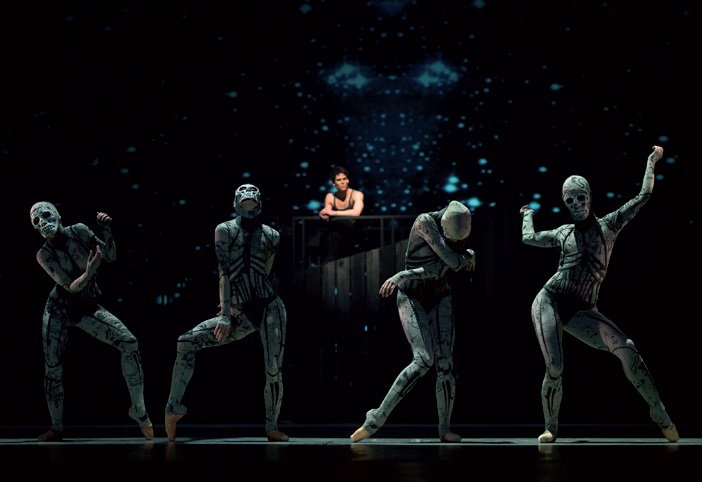
Sorcerer’s Apprentice; dance of Reapers, animation of the night sky, the use of moving heads Martin 2000 Performance (photo: Hana Smejkalová)
Photo Hana Smejkalová, source: http://www.narodni-divadlo.cz/en/show/5871?t=2015-05-03-19-00
2. The Golem
The authors of the performance Golem were Kristián Kubák and Marie Nováková. It was taking place in September 2013 in Prague Štvanice, in a villa no. 858. In the villa, which had been empty and unused for more than a year, the novel The Golem by Gustav Meyrink was staged there and was performed for three weeks. This production can be described most accurately as an interactive theater project. In addition to the fact that it takes place in a non-theater space, it is specific because of rigorous removal of formal boundaries between the stage and the auditorium. The whole villa (except for the part where the security guard was located) with the adjacent surroundings became a stage that was populated by approximately thirty persons for a couple of hours. It became a house in the Prague’s Jewish Town, where the story of Meyrink’s novel developed. Viewers were admitted in it and they were left free to move any way they wanted and to watch what they wanted (but they were forbidden to speak and advised not to interfere with the situation). It was up to them, whether they chose to watch the behavior of the characters or to walk around the villa and explore it or sit at the bar all the time. The story was developing all around them, was linear without repetition. Different situations occurred simultaneously.
Pitfalls of lighting design projects in non-theatrical spaces.
If such a similar project is to be made, it is necessary to prepare it well because the space is not designed for theater, there are going to be all sorts of obstacles and such kind of problems occurs, which is not necessary to solve in a theatre.
Here is a brief outline of what is good to think before implementation:
- Connection to the power supply for the building / space: is there wiring somewhere, in what condition, how high consumption does it allow? The best is to have own, independent source (or lights that are independent on electricity), especially if the building is not maintained. That would allow to avoid any unpleasant incidents with local wiring. However, this is a more expensive solution and demanding of material – especially during the long-term projects. In addition, one has to expect that cables would be lying everywhere (their masking is difficult, they might block the door, it is necessary to ensure the safe movement of persons, etc.).
- How often it will be played – whether the project is of a short-term or of a more permanent character (in this case, it was played every evening for three weeks).
- What is the deal with the owner regarding the use of space – or what all one can dare to do? It might be a problem for the owner if some permanent marks will remain after the production, for instance holes in the wall from suspended, sixty kilos lighting installation. (“Golem’s” villa was to be returned in the same condition, in which it had been handed over.)
- Whether the object is used / inhabited by someone else (security staff in the case of the Golem), whom it is not appropriate to bother with creative incursion.
- Whether the performance contains outdoor section, if there is necessary to have a wet variant. (Golem was also played outdoors, even in the rain.)
- What are the surroundings lighting conditions – complete darkness is often necessary, which may not be easy. (This was also the case of Golem – it was necessary to get rid of street lights. It was arranged with management company that some lights in the closest proximity would be off during the performance – from about 19.00 to 24.00 h).
- It is necessary to think about the safety and comfort of both the audience and the performers and to ensure adequate lighting levels in all exposed areas. (During the Golem, there were around one hundred people in the villa who may not trample each other, fall down the stairs, must find the toilet, etc.) All this (and also more common problems such as the budget and time) are issues that affect the form of lighting design even before the creative part of the design can be considered. In addition to this, the initial situation of the Golem was such: the villa had limited options of instrument installation, especially when it was necessary that they would not interfere one with another and would not disturb the overall visual appearance if possible. It was also necessary to reckon with limited power and problematic control of lights – only because one operator was not able to cover the entire area of the villa. The viewer might have been really anywhere most of the time – watching the situation from all possible angles, near and afar, left or right. This by itself, without thinking about the reasons for such an arrangement, affected fundamentally any thinking about sources and their positions.
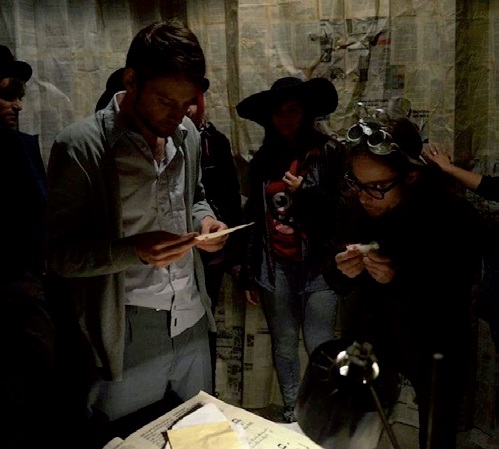
A dialogue between two characters was taking place in the apartment of the key character (left). The persons in the background are the spectators. The entire area is lit by a chandelier (outside our visual field) and by a lamp on the table. At this moment, actors had turned away from the main sources of light, which, however, isn’t symptomatic in relation to the character of the source and ambience. The viewers are so close that reflection from the surrounding surfaces is sufficient for casting light into actors’ faces.
General principles of the lighting design
Firstly, it should be understood that it wasn’t a classical theatre performance and draw conclusions from it. One of the aims of the performance was to create the illusion that it was not a performance, that all happened regardless of whether it was being watched. Viewers were taken either as other inhabitants of the Jewish Quarter (and minor characters actually communicated with them in such a way) or were completely ignored (by the main characters), even if they would have been gazing over the character’s shoulder. The first allowed spectators to be directly involved in the events that happened in the villa, to experience them (for instance to be present during the arrests of Pernath or to celebrate the birthday of the bar owner). The latter, on the contrary, provided the opportunity to see intimate, non-public situations (in particular for instance to watch Pernath writing his diary in the privacy of his studio). The lighting design had to correspond with these intentions – lighting in the villa had to be non-theatrical, natural or rather consistently motivated – be it by the situation, environment or by the traits of a character. It was clear that viewers were indeed everywhere, on the other hand, they had the opportunity to be really close, so there was no need to be afraid that something would have escaped their attention. Also, it is not daring to say that light, not being concentrated on the actors or the situation, helped to maintain the desired illusion that the story was developing around the audience, but not for them.
The result therefore consisted of something between interior, architectural lighting and light installation. The rooms of individual characters, to put it simply, contained chandeliers and lamps, the bar and cafe were lit as bars usually are, a small stage in the cafe was lit with classical theatrical spotlights. There were also spaces where it was possible to dare to use a bolder metaphor, but it had to be always motivated by something specific.
If for instance the creator decided to develop further the set design of a room that was designed like the inside of a cloud and manufacture an opening in the ceiling for having a view on the sky full of stars, which of course looks being staged, a legitimate question (while being meaningless in the classical theater) follows, which one of the characters that populated the area installed it in such a way and why – and the same question, moreover, is also directed to the set designer and his cloud. Thus, one is constantly trying to unite indispensable motivated lighting with the installation that should be able to carry other meanings. It is also necessary to keep in mind where more and where less attention and concentration is needed, and ingeniously adapt the shape and position of lights to it.
Soon after rehearsing of the Golem had started, it became clear that the main entrance to the villa was the place that had to be well lit for the arrival of characters. It was therefore necessary to install a lamp (chandelier) in such a way that the entrance would be lit well without creating the impression of it being deliberate. Or when it was clear that there would be longer dialogical situations in some rooms, it was convenient to have enough light in the room (again from a natural source, a chandelier), which wouldn’t be directly focused on the actor though, however, it would provide sufficient visibility for acting (in addition, people usually don’t talk to each other in the dark).
On the contrary, if it was clear that another area rather bestows traits to a character or to the whole villa in the composition, the lighting could be more decorative, atmospheric.
Controlling Golem
The original idea was that the lighting of the entire villa would be controlled from a single place by a single operator. But this proved unfeasible and unreasonable for several reasons: firstly, one operator could hardly guard all situations that were taking place in the villa, especially if they were occurring simultaneously. And even if he would have had a system that would enable him to monitor key areas of the villa. Secondly, the technical requirements of such a solution were beyond both time and financial possibilities of the project. Thirdly, it became obvious that it wasn’t necessary for the operator to have a control of the lighting in the characters’ rooms. Basically, if there is a chandelier in the room, there must be a switch for it as well. If a character enters into a room, he just switches on and switches off when leaving, which makes the space more credible (and moreover it allows performers to settle better in it).
Such a decentralized control was disproportionately technically easier, but it also had its drawbacks: for instance when it was necessary to make a blackout throughout the villa. The result was a compromise solution when the lighting of the entire ground floor (which was still quite overseeable) was controlled from one location and the lighting in the other two floors was controlled locally. By synchronizing few people, it was then actually possible to turn off lights throughout the villa.
Conclusion
Lighting a project, such as Golem, was very demanding for a lighting designer, both for his technical readiness and competence as well as on his ingenuity and ability to overcome usual patterns of thinking about light and lighting. And the last mentioned is quite enriching and fun – when you find that only a switch on the wall is sufficient instead of a digital counter , that when it rains, you can simply attach umbrellas to the reflectors, that one bulb can do the work of three reflectors or that the wireless distribution of DMX signal can be replaced with eight assistants with a walkie-talkie.
3. Farm in the Cave
Type of theater space
The type of theater space is the first thing that determines the adaptation of lighting design to a different venue. Basically, there are two basic types available – classical proscenium theater and studio stage, usually with a possibility of variable space (arena, a change of the auditorium / stage disposition). The traditional stage with proscenium arch and forestage, often only with an extended orchestra pit, has a raised floor roughly to the height of the eyes of the first row in the audience, auditorium rake is not so steep, i.e. the height difference between the first and the last row is not so crucial (according to the size of the parterre). Given the current staging techniques, where there are commonly used projections on the floor of the stage or working with precise shapes of lit spaces in the scene, this type of theater is not appropriate – and minimally because the spectators in the first row do not see on the floor of the stage.
Hanging points and possible positions of instruments are limited by the architectural design (location fly bars, false proscenium, bridges, catwalks), which determines the applicable angles of light. This performance, however, originated in site-specific conditions, i.e. in the space originally not intended for theater productions and that is close to the form of the studio type, where the whole surface of the stage can be used for theatrical events without any special hierarchy and where the placement options of instruments are highly variable because of the ceiling grid, which enables to hang or suspend headlamps almost anywhere (with a respect to the height of the grid and the view of the viewer).
The auditorium is then raked considerably in each row (at least 40 cm difference) to ensure the good visibility not only of the rear part of the stage but the space in front of the first row as well. With the need of touring, it was necessary to adapt the performance for theater stage of another type. Good practice dictates that the theater space should have a precise technical documentation – drawings in all three perspectives with dimensions (by which it is possible to evaluate the distribution of scenography, angles of mounted headlamps and visual field of a spectator) and a detailed list of serviceable lighting technology.
On this basis, a technical rider is created – a plan of stage design and layout, the number and types of headlamps, which is sent to a technical production of the hosting venue.
(Note: each lightplot contains a legend, the key to the used signs for headlamps as well as further equipment, individual plans can thus be formally different, and yet they are generally understood.) Unclear points are resolved in advance by technical production of the performance and host theater, because at the preparation time at the site cannot be cut by identifying problems.
Example – physical theater The Theatre (Farm in the Cave)
The performance Divadlo / The Theatre came into existence in a site-specific, non-theatrical space Preslovka, which was fully equipped for this purpose the technical with all the theatrical technology, from the auditorium rake through the stage to the truss structure and lighting equipment. The central scenography consists of a platform of 10 × 10 m in height of 1 m, mounted from standard system of parallel platforms (NivTec), but with specially adjusted boards (carved holes, trapdoors, reinforced construction, etc.), the “spectator” rake for actors in the back sector and above it, an elevated area for musicians. On the main platform, there are used props, adjusted aluminum rods that are inserted in the holes by actors who climb them, so in terms of security, it is a fairly demanding set design. The original lighting design in Preslovka (author P. Kotlík) used local spatial layout, including the side windows on the one side and the entrance to the hall, worked with a lack of space, there was no backstage or technical areas around the stage. The performance was subsequently transferred to the “home” venue Ponec, providing more space and technical background, but without these specific architectural elements that had to be replaced somehow in some scenes.
Let’s leave aside this adaptation and let’s proceed from the technical settings for the Ponec theater as the original, compared with the hosting in Brazil, but also purely site-specific space Cine SantaTereza in Belo Horizonte (hereinafter referred to as CST), the former, now disused cinema in a dilapidated state. The input information for planned hosting were the photographs and dimensioned plans of the space. In the first phase, the local production negotiated the way to adaptation of the space to fit scenography into the space, because both the staging areas are not available to be reduced in any way in terms of choreography. A six page technical rider with other attachments was made, where were specified in detail the requirements for space, facilities (technical and acting), the sound including the acoustic requirements, lighting equipment and material requirements for modification of the space itself.
The company, however, carried only the most essential elements of stage design, the platform itself was produced from the local stage system, which is the company Rosco domain in South America, thus it was not possible to use a proven system NivTec, furthermore, the Rosco system has different technical arrangement of elevation parallel platform boards, which caused the problem to the actors who crawled beneath the platform.
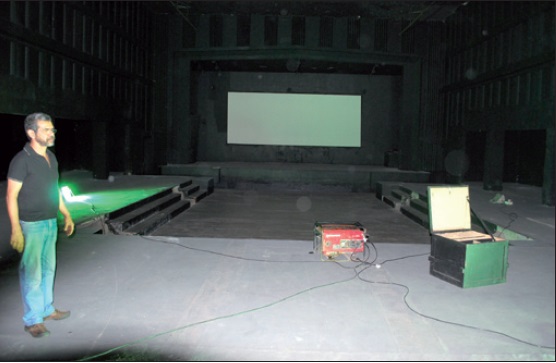
Cine Santa Tereza, Belo Horizonte, this is how the area looked like before the arrival of the company. The hollow in the middle of the hall had to be aligned to the level of the floor so that the entire surface could support the weight of the platform itself, on the one hand, and multiplied dynamic load during group movement action on the other, so that was – probably – filled with gravel and subsequently the entire area was covered with boards and carpet.
Communication from Brazilian production was not perfect, the plans were not sufficiently dimensioned, so light plot came into existence for this adaptation that counted with an increase of the headlights and their positional layout. Because it was reckoned that the ceiling suspension grid would be built from the mobile truss structure and that the main platform will have identical dimensions, the truss was designed similarly as in the home stage at the Ponec Theatre. If we compare the light plots 1a with 2a, the placement of lights corresponds more or less to the “original”. The only exception are rear PAR’s (channels 41 + 42), which are not at the light plot for truss in CST because there was no hanging position in the rear sector, so they were thus placed in the light plot for the ground on a high tripod (it turned out eventually that it can be hung on a some kind of piece of iron protruding from the ceiling). On the contrary, there were six profiles in addition (channel 47), in the truss for CST in the rear sector, which lit the backdrop at the rear, their location on the left back is intentional so that the reflected light wouldn’t fall on the musicians who were on the left as well. Another increase was eight contra Fresnels with the filter L113 (magenta, channel 46) that added the color to the flat of the platform – this was achieved by floods (channels 11 + 12 + 27) that were mounted into sheet plate reflective ceiling at the “home” stage, but the ceiling in the CST was black, thus almost not reflective, which was taken into account despite the increase in the number of the floods (furthermore the local type of these headlamps with no cover glass was not ideal for use with color filters, it burnt them and it had to be replaced after each performance). The last but one change was the doubling of the central flood, Fresnel 2kW (channel 17) and because it was not clear what is the difference in altitude between the platforms and truss, the number of lights was doubled, just to be sure, to cover a larger area. (The last difference between the two ceiling light plots is the original solo PAR, channel 18, which is not drawn in the CST – it’s a mistake, it should be there, and in reality there eventually was, probably, the headlamp PC, because the number of required PAR’s was poorly specified.)
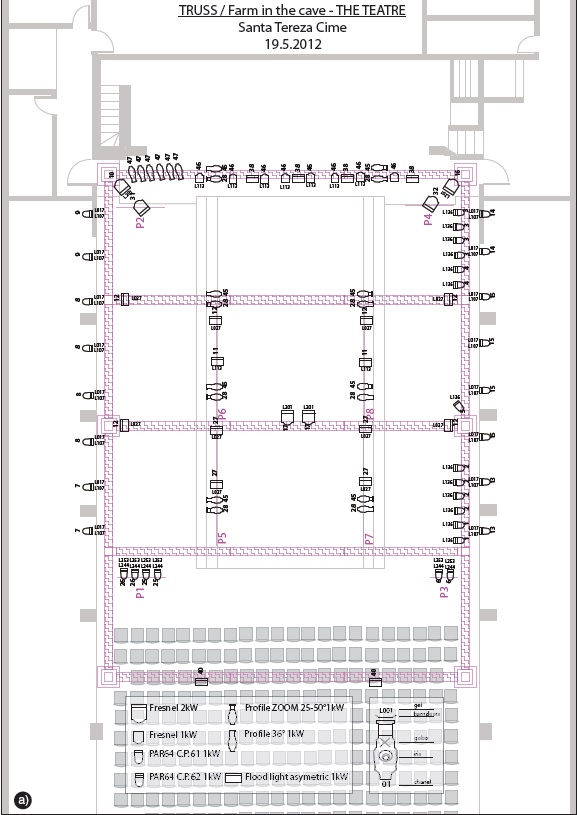
Cine Santa Teresa, Belo Horizonte, Brazil suspension position on the grid / truss – signs P1-P4 signify rods suspended under the grid, because of lower height of truss, there were used only front pods P1 + P3, rear pods P2 + P4 with Fresnel 2 kW were in too small angle so they were positioned onto the truss.
Instruments specific for the Ponec Theatre (6 + 6 profiles, channel 28 + 45), which light walls and their details, were kept in the plan, even though it was clear that this site-specific effect would not work in the CST due to the black color of the walls – they served as a reserve for creation of another distinctive atmosphere, about which a debate took place with the director and choreographer Viliam Dočolomanský at the place later.
Worth mentioning in that the specialty of the lighting design, two side front (FOH) rods, suspended about 1.5 m below the truss structure, located slightly in front of the main platform (labeled P1, P3 in Fig. 2a) on which there are four PAR’s on the left and two on the right (channel 25 + 26, channel 6) interestingly lighting the entire area. The position and number of lights in relation to the stage is clear, however, it could be problematic in relation to the view of a spectator- if the elevation was too high, the upper row of seats would have this obstacle in in the sightlines of a spectator throughout the performance. This criterion that had to be taken into account as well, here it went well and the light didn’t interfere with the comfortable visibility of the scene.
Light plots of land positions in both spaces are more or less the same, let’s have a look mainly at four pairs of towers in the plan for the CST, always mounted with one PAR and one Fresnel (channel 48-51, channel 52-55). For lack of information in the preparatory phase, the author rather inserted this side lights as a support of the ceiling positions of the side PAR’s (channel 7-9 + 13-15) and as a supplementary coverage of purple floods (channel 11 + 12 + 27) and contra Fresnel (channel 46).
In reality, they were not used because the dimensions of space and its arrangement quite matched the domestic stage, nevertheless it was not a burden for the local production. For the sake of completeness, let us make a brief mention to the PC unit (channel 43) in the original light in the rear right corner, which was replaced by two PAR’s from above (another suitable rod was found here ), then multiplying of the original couple of ground contra PAR’s (channel 30), focused to the central rear stairs to the platform, to four PAR’s (channel 29 + 30), which proved practical because small distance between the main platform and actors’ rake did not allow the common location in the middle, so it was necessary to move the PARs much sideways and there had to be more of them in this angle.
As there occurred fundamental changes in the location, number and focus of headlamps and because of the color of the whole area, it was necessary to alter the whole program of the performance – so some scenes looked completely different, but the overall lighting design remained.
All the aforementioned changes in both performances, and not only in them, take into account the dimension of space and its division, height and location of the suspension positions, which significantly affects the angle of the light and the size of the light beam (increase or decrease in the number of instruments), the technological possibilities, including available technology (change in the type of units, a smaller number of available lights), the angle of spectators’ view and also the color of the walls in the space or coverage options (usually black velvet) legs – all of which can lead to an increase / decrease in the intensity of individual lights in certain scenes or complete alteration of the light atmosphere (cue) in the scene. It is up to the technical team and the director, how they are able to deal with the possibility or necessity of improvisation on the spot and to which extent they retain the original lighting design.
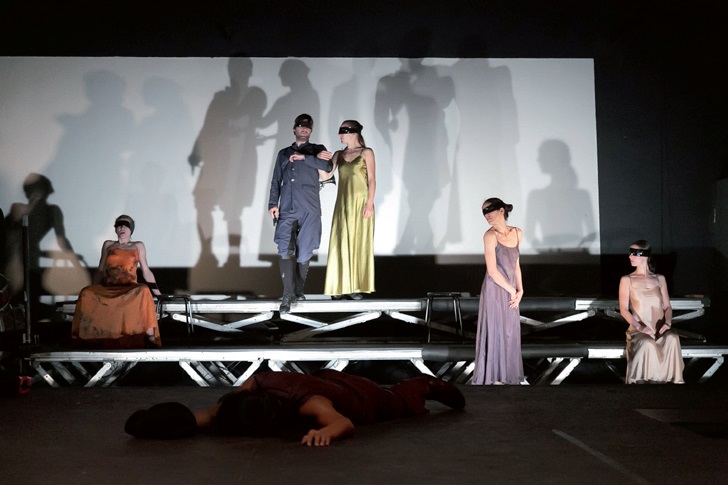
The standard lighting of actors’ rake- from ground floods (ch 23) located beneath the main platform. The logical director’s requirement was that this rake would be really strongly illuminated – it is relatively far away from the viewer, behind the main acting area and any action on it is behind this “barrier”, so it is necessary to highlight it with light.
Sources and literature
Typical Lighting Plot. GRAHAM, Leigh. The Drama InfoWeb [online]. [Retrieved 2015-05-07]. Available from: http://www.dramainfoweb.co.uk/pages/lighting_1.html
ALDERSON, Mick. How to read a light plot: A Guide for Stagehands [online]. [Retrieved 2015-05-07]. Available from: http://www.ia470.com/articles/readplot.htm
SALZBERG, Jeffrey. How to Work with a Lighting Designer [online]. [Retrieved 2015-05-04]. Available from: http://www.jeffsalzberg.com/archive/lighting.htm
SALZBERG, Jeffrey E. a Judy KUPFERMAN. Lighting Paperwork. In: [online]. [Retrieved 2015-05-09]. Available from: http://www.stagelightingprimer.com/index.html?slfs-paperwork.html&2
HARVEY, Mark. Creating the Light Plot. University of Minnesota [online]. [Retrieved 2015-05-07]. Available from: http://www.d.umn.edu/~mharvey/th1501lightplot.html
MCKERNON, John. 1997. Focus Charts [online]. [Retrieved 2015-05-07]. Available from: http://www.mckernon.com/_/Focus_Charts.html
RICHARDSON, Steve. 2000. Lighting Design Paperwork. WPI Technical Theatre Handbook [online]. [Retrieved 2015-05-07]. Available from: http://www.gweep.net/~prefect/pubs/iqp/node87.html
SAYER, Rob. The Magic Sheet And You. On Stage Lighting [online]. [Retrieved 2015-05-07]. Available from: http://www.onstagelighting.co.uk/console-programming/lighting-magic-sheet/
SAYER, Rob. Lighting Cue Timing – Better Scene Transitions. In: [online]. 2008 [Retrieved 2015-05-09]. Available from: http://www.onstagelighting.co.uk/console-programming/lighting-cue-timing/
WILD, Larry. 2001. Light Plot, Lists and Schedules [online]. Aberdeen: Northern State University [Retrieved 2015-05-07]. Available from: http://www3.northern.edu/wild/LiteDes/ld11.htm
WILLIAMS, Bill. 1999. Professional Lighting Procedure. Stage Lighting Design [online]. [Retrieved 2015-05-07]. Available from: http://www.mts.net/~william5/sld/sld-400.htm
Interactive Light Plot. Lighting Archive [online]. [Retrieved 2015-05-07]. Available from: http://www.thelightingarchive.org/interactive.php
Lighting Design – The Process. The Theatre Crafts [online]. [Retrieved 2015-05-07]. Available from: http://www.theatrecrafts.com/page.php?id=807
DMX-512 [online]. [Retrieved 2015-05-07]. Available from: http://www.lighting-association.com/links/dmx-faq.htm
Strand Archive [online]. [Retrieved 2015-05-07]. Available from: http://www.strandarchive.co.uk/contents.php
Lighting Design – Paperwork. Theatrecrafts.com [online]. [Retrieved 2015-05-07]. Available from: http://www.theatrecrafts.com/page.php?id=804
SAYER, Rob. Moving Light Control – Palettes – Lighting Desk Basics 4. On Stage Lighting [online]. [cit. 2015-05-07]. Dostupné z: http://www.onstagelighting.co.uk/learn-stage-lighting/moving-light-control-pallettes/
Dimmers and Patching. In: ALDERSON, Mick. Stagehand primer [online]. 2002 [Retrieved 2015-05-07]. Available from: http://www.ia470.com/primer/dimmer.htm
Software:
Virtual Magic Sheet (http://westsidesystems.com/vms/vms.html)
Field Templates. Theatrical Lighting Symbols. Available from: http://www.fieldtemplate.com/
Literature:
AHRENS, Lynn a Robert VIAGAS. The alchemy of theatre: the divine science : essays on theatre. Milwaukee, WI: Distribition, North America, Hal Leonard Corp., 2006. 284 p. ISBN 978-155-7836-984. Available also from: http://amzn.com/1557836981
BOULANGER, Norman a Warren C LOUNSBURY. Theatre lighting from A to Z. Seattle: University of Washington Press, 1992. 197 p. ISBN 02-959-7214-9. Available also from: http://amzn.com/0295972149
CARVER, Rita Kogler. Stagecraft fundamentals: a guide and reference for theatrical production. 2nd ed. Boston: Focal Press, 2013. xviii, 490 p. ISBN 978-024-0820-514. Available also from: http://amzn.com/0240820517
CLAIBORNE, Vickie. Media servers for lighting programmers: a comprehensive guide to working with digital lighting. ISBN 978-0415721899. Available also from: http://amzn.com/041572189X
COUCH, edited by Susan Brady and Nena. Documenting: lighting design. New York, N.Y: Theatre Library Association, 2007. ISBN 978-093-2610-201. Available also from: http://amzn.com/093261020X
CUNINGHAM, Glen. Stage lighting revealed: a design and execution handbook. Prospect Heights, IL: Waveland Press, 1993. ISBN 978-157-7662-624. Available also from: http://amzn.com/1577662628
DORN, Dennis a Mark SHANDA. Drafting for the theatre. 2nd ed. Carbondale: Southern Illinois University Press, 2012. ix, 372 p. ISBN 978-080-9387-731. Available also from: http://amzn.com/0809330377
FRASER, Neil. Lighting and sound. Rev. ed. Oxford: Phaidon, 1988. ISBN 978-071-4825-144. Available also from: http://amzn.com/071482514X
FRASER, Neil a with a foreword by Richard ATTENBOROUGH. Stage lighting design: a practical guide. Marlborough, Wiltshire [U.K.]: Crowood Press, 1999. ISBN 978-186-1262-486. Available also from: http://amzn.com/1861262485
GILLETTE, J. Theatrical design and production: an introduction to scene design and construction, lighting, sound, costume, and makeup. 6th ed. Boston: McGraw-Hill Higher Education, 2008. xvi, 613 p. ISBN 00-735-1419-5. Available also from: http://amzn.com/0073514195
HILLMAR, Gregg. Light Plot Deconstructed. 5th edition. Nemetschek Vectorworks, Inc., 2013. 136 p. Available also from: http://amzn.com/B00CSXWUF0
HOLDEN, Alys a Bronislaw J SAMMLER. Structural design for the stage. Boston: Focal Press, 1999. xii, 416 p. ISBN 02-408-0354-X. Available also from: http://amzn.com/024080354X
IONAZZI, Daniel A. The stage management handbook. White Hall, Va.: Betterway Publications, 1992. 190 p. ISBN 15-587-0235-0. Available also from: http://amzn.com/1558702350
KALUTA, John. The perfect stage crew: the compleat technical guide for high school, college, and community theater. New York: Allworth Press, 2003. xiv, 240 p. ISBN 15-811-5315-5. Available also from: http://amzn.com/1581153155
KELLY, Thomas A. The back stage guide to stage management. 2nd ed. New York: Back Stage Books, 1999. 304 p. ISBN 08-230-8810-3. Available also from: http://amzn.com/0823088103
MCMILLS, Anne E. The assistant lighting designer’s toolkit. ISBN 978-041-5711-210. Available also from: http://amzn.com/0415711215
MILLER, James Hull. Stage lighting in the boondocks: a layman’s handbook of down-to-earth methods of lighting theatricals with limited resources. 4th ed. Colorado Springs, Colo.: Meriwether Pub., 1995. viii, 131 p. ISBN 09-162-6011-9. Available also from: http://amzn.com/0916260119
MOODY, James L a Paul DEXTER. Concert lighting: techniques, art, and business. 3rd ed. Boston: Elsevier/Focal Press, 2010. xvii, 334 p. ISBN 978-024-0806-891. Available also from: http://amzn.com/0240806891
PALMER, Scott. Light: Readings in Theatre Practice. New York, NY: Palgrave Macmillan, 2013. xv, 301 p. ISBN 978-023-0551-909. Available also from: http://amzn.com/0230551904
REID, Francis. Lighting the stage: a lighting designer’s experiences. Boston: Focal Press, 1995. x, 113 p. ISBN 02-405-1375-4. Available also from: http://amzn.com/0240513754
RIPLEY, David. AutoCAD: a handbook for theatre users. Cambridge: Entertainment Technology Press, 2004. ISBN 978-190-4031-314. Available also from: http://amzn.com/1904031315
ROWE, Clare P. Drawing: a practical course for scenic, costume, and lighting designers. Boston: Focal Press, 2007. x, 272 p. ISBN 02-408-0554-2. Available also from: http://amzn.com/0240805542
RUBIN, Joel E. a Leland H. WATSON. Theatrical Lighting Practice. New York: Theatre Arts Books, 1968. Available also from: http://amzn.com/B000OKK9UW
SHELLEY, Steven. A practical guide to stage lighting. 2nd ed. Boston: Elsevier/Focal Press, 2011. xx, 462 p. ISBN 978-024-0811-413. Available also from: http://amzn.com/0240811410
WARFEL, William B. The new handbook of stage lighting graphics. New York: Drama Book Publishers, 1990. 112 p. ISBN 08-967-6112-6. Available also from: http://amzn.com/0896761126
WOODBRIDGE, Patricia. Designer drafting for the entertainment world. Boston, Mass.: Focal Press, 2000. xii, 372 p. ISBN 02-408-0424-4. Available also from: http://amzn.com/0240804244
Test

